Across the world gathers a global community of conscientious men, women, and children gather around the fire and indigenous prayers to walk a path of the sacred plant medicines, of great healing, of powerful prayer, of traditional songs, of deep commitment, and of honoring the Great Spirit inherent on all things, big and small, animated and still, visible and invisible. From the two legged to the four legged, to the ones that fly, to the ones that swim, to the great ones that have not moved for eons, these people worship the Earth, the Sky, the Sun. They choose to live in harmony with all beings on this planet as they are our relations and ancestors. They shy away from gurus and ideologies, receiving strength, clarity, wisdom, wellbeing, and prolonged guidance from the masters of consciousness, the sacred visionary plants (Las Plantas Sagradas).
Since I first arrived in Latin America in 2014, I began to walk this path, alongside shamans, traditional healers, 'curanderos', 'yageceros', 'peyoteros', 'temazcaleros', and many other powerful, magical, and mysterious figures. In this process I have seen many things that many modern cultures have discarded, and I have seen many unexplainable, magical things that not everyone may come to experience, nor begin to believe is possible. But for the profound teachings, and the deep healings of mind, body, heart and soul I have experienced, I express gratitude to my path, to the Great Spirit, to Pachamama, the Mother Earth, to the Grandfather and Grandmother plant spirits; Yagé, Ayahuasca, Peyote, Santo Daime, San Pedro, Kambo, Tobacco, Mama Coca, amongst many others. My journey has brought me from the dark and humid sweat lodges to the sacred desert of Wirikuta, Mexico, to the Vision Quest in the Cordilleras of Colombia, to the healing huts of indigenous shamans of the Amazons. I have met many great people along the way, with great hearts, and great minds, all praying and walking this path for the same reason, to create a better life for themselves and for all their relations, now and 7 generations forward.
These images are an ongoing collection of portraits, landscapes, traditions, beliefs, and unique moments of my personal experience walking the medicine path and the Red Road of the First Nation peoples' legacies. Beyond being my photographic subjects, these people are my family, those of whom I can trust my life and my secrets. I honor my path alongside theirs in sharing these images with the viewer, so that the world may rejoice to know, that there are many good souls out there, fighting for our Mother Earth, for the evolution of mankind, and the transcendence of consciousness through faith, prayer, music, and great internal changes. The divine exists everywhere, especially within ourselves, and as our ancestors had predicted, the time to awaken and unite as one human race is now.
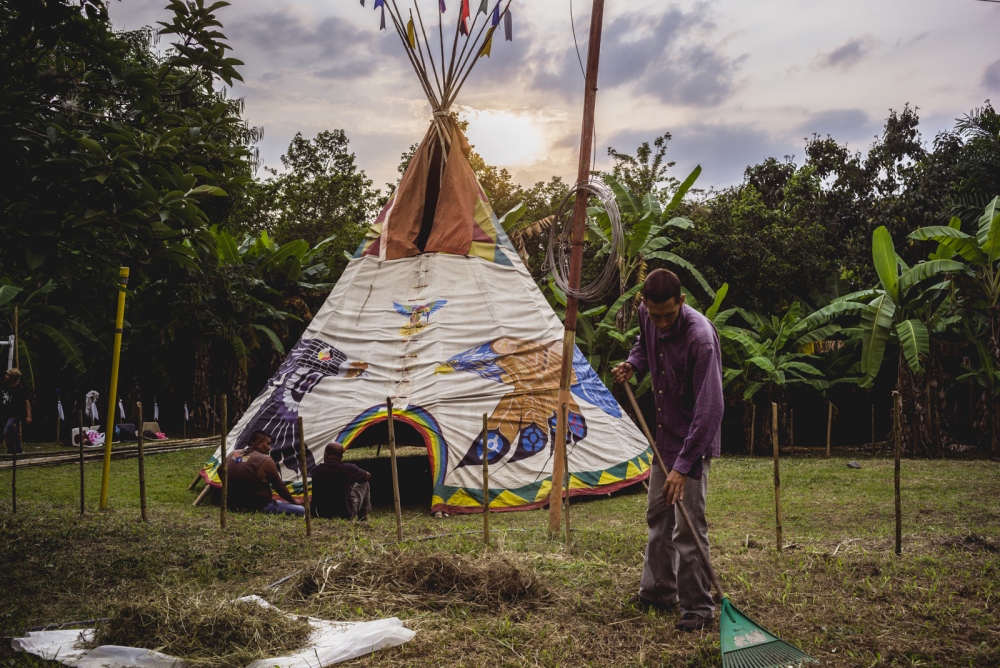
Alejandro rakes the camp grounds in preparation for the Vision Quest as the sun sets over the tipi and jungle forage.
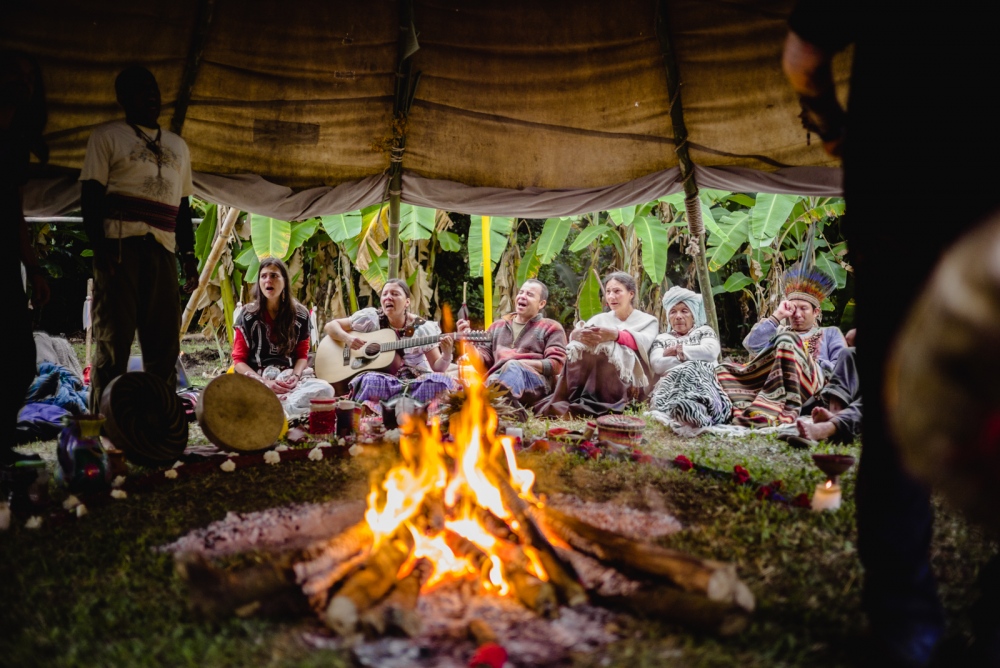
Various medicine men, women, and indigenous elders sing to the plant spirit of Yagé and the sacred fire in the morning after the Opening Ceremony for the Vision Quest.
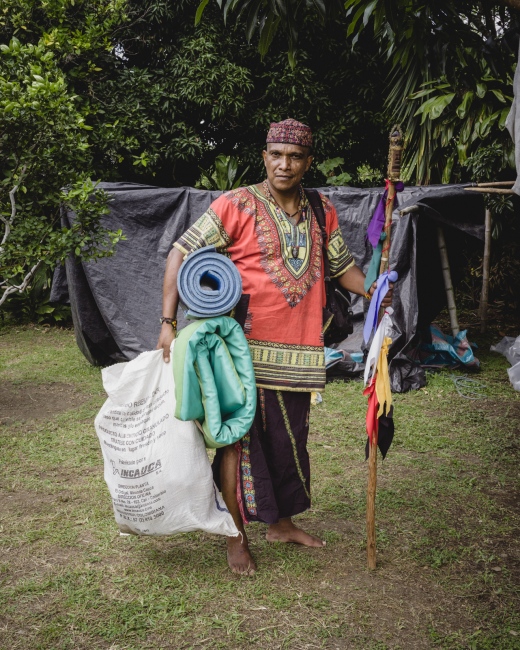
Traditional medicine man and 'yagecero' Argemiro, prepares his personal belongings for his 7th 'Hamblecha,' or 'Vision Quest'.
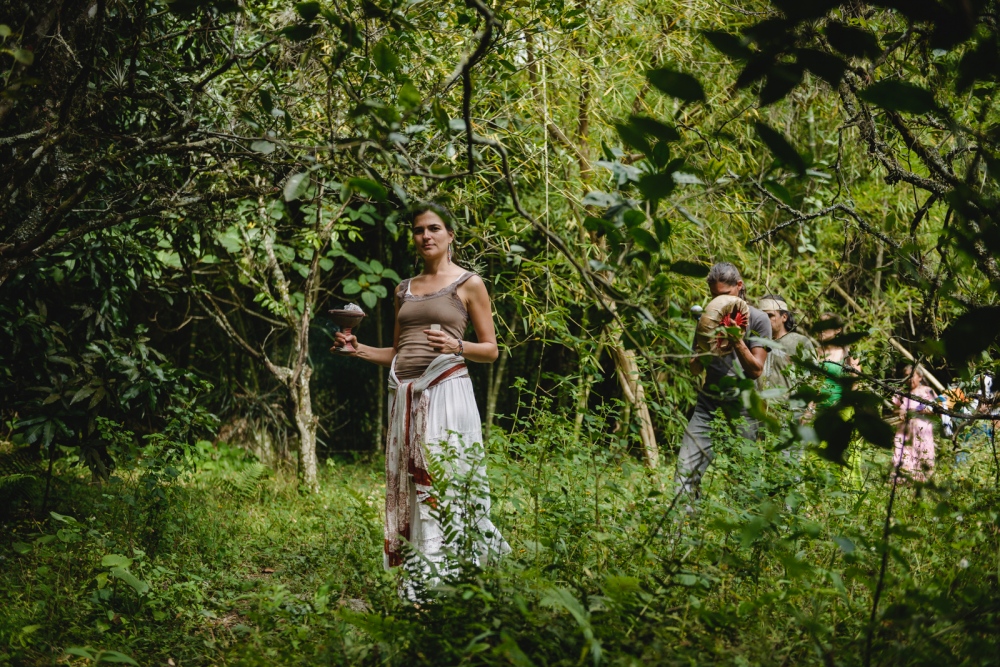
Smudging the path with 'copalera' in hand, Catalina leads the procession of visionaries through the jungle to their allocated places of power where they will be praying, meditating, and fasting for four days.
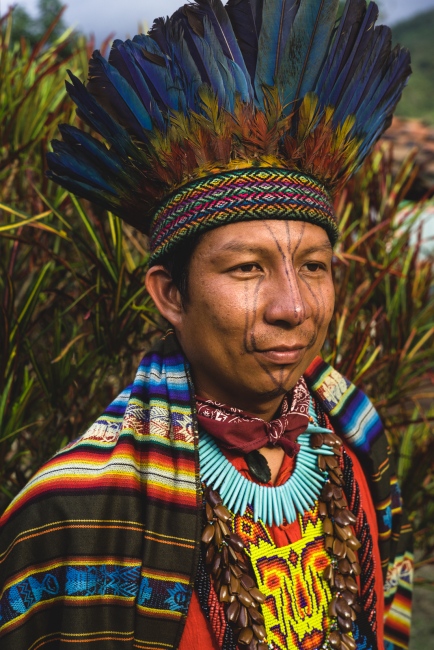
Taita Andres of the indigenous Embera people. Although young he is recognized as one of the high priests of his people, holding vast information about plant medicines and the invisible spirit world.

The sweat lodge, or 'Inipi", meaning "to be born again" in Lakota, is the place where visionaries begin their 4 day Vision Quest. Through sweating, chanting and praying, temporarily leave behind the world, their fears, their emotions, their sustenance, and their comforts in order to purify and receive the visions from the spirit of the mountain. Here they begin the four day fast without food, water, sleep, and speech.

Taita Leonel of the indigenous Embera people. A traditional 'curandero' and medicine man who works with the spirits of the tobacco plant and mushrooms.

Rosa, one of the 21 visionaries who will be fasting the four days during the Vision Quest, leaves behind an offering of flowers to the spirit of the forest and the mountain.

Carolina, one of the supports at the camp, who will eat, drink, sleep, and pray for the visionaries during their 4 day fast in the mountain.

Tomás, a traditional medicine man, originally from Mexico, smoking a cigar in a sacred way to pray for the visionaries and for the wellbeing of all attendees during the Vision Quest.

Mau Tanka, a powerful medicine man of the Red Road and Sun Dancer, is known to be responsible for introducing the Lakota and First Nation traditions of the Native Americans to Colombia.

Abuela Ana Lucia of the indigenous Embera people of Colombia, playing her small drum after having quested for 4 days during the Vision Quest.

The visionaries return from questing and fasting 4 days in the mountain, bringing their prayer staffs and offerings to be burned to the fire.
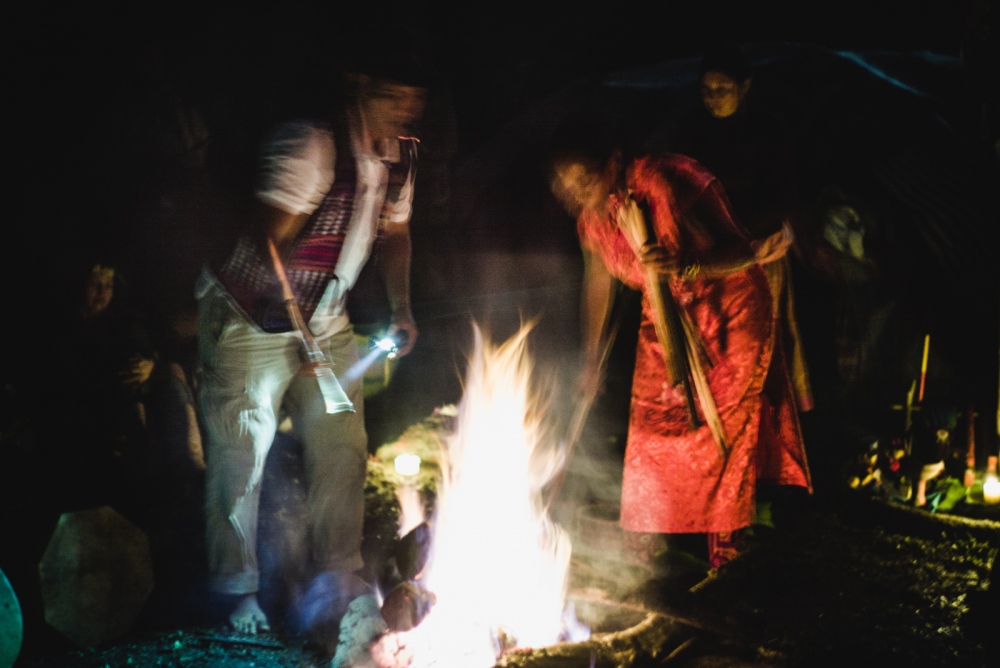
Visionaries offer their prayers to the sacred fire during the Closing Ceremony of the Vision Quest.

Visionary Danit makes her prayers and offerings to the sacred fire under a full moon during the Vision Quest.
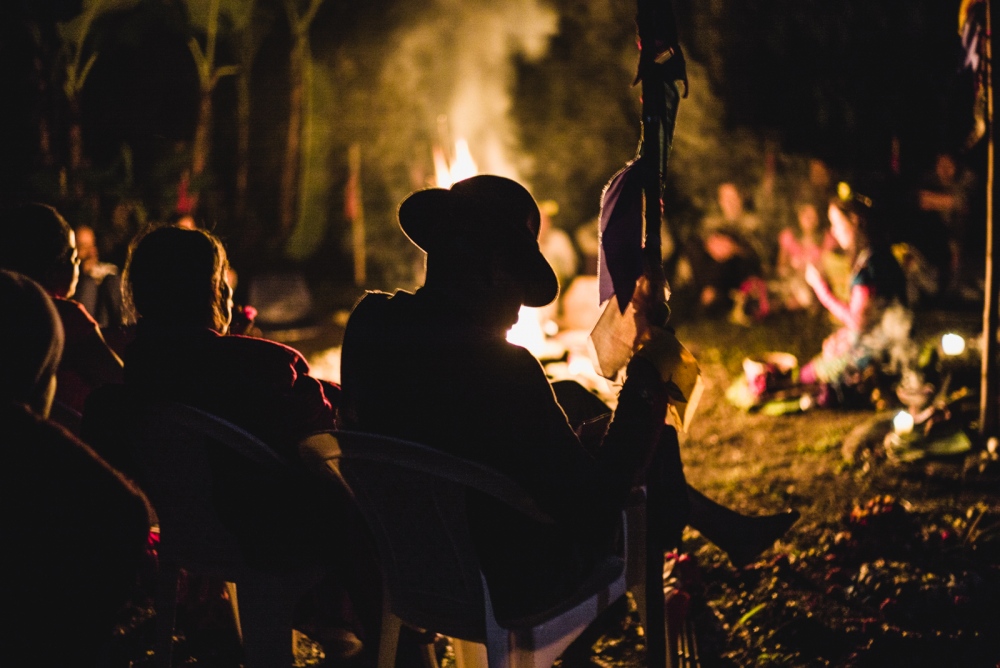
Visionaries and Supports gather around the sacred fire to bear witness to the prayers the questers offer up to the sacred fire during the Vision Quest.

Florida, Valle de Cauca, Colombia, home and birthplace of various medicine men and women, including Citlali, Argemiro, and Mau Tanka.

Citlali, a 'yagecera,' or traditional medicine woman, collects flowers and medicinal plants at the local market in Florida, Colombia.

Ortiga, a medicinally purifying plant, covered in large thorns that emit a numbing venom, inflaming the skin when applied by strong (or soft) blows of the branch upon a person. The plant is used to stimulate circulation, the immune system, and to clean the person energetically.

Citlali, 'yagecera' and traditional medicine woman, smudges her home with a 'copalera' to purify the energy of the space.

Citlali's altar, honoring the Orixa, Yemanjá, deity of water and of the ocean. Besides working with plant medicines, Citlali has a long history with the Yeruba traditions of Africa, the Caribbean, and Latin America.

Argemiro, 'yagecero' and traditional medicine man prepares to blow the conch shell to convoke and salute the 7 directions of the universe during a prayer and offering to the spirit of the water with a large group of attendees.

Carolina and Giscela smoke pure tobacco cigars whilst making a women's offering to the Earth outside their home in Santa Elena, Colombia.

Traditional medicine man and 'Yagecero', Argemiro makes a small prayer to the medicine spirit whilst leading a yagé ceremony in the dark in Santa Elena, Colombia.

The city of Mocoa, Putumayo, Colombia, seen from the jungle across the river.

Argemiro walking up to the farm of his teacher and 'curandero', Taita Juan Yaiguaje in the jungles of Mocoa, Putumayo, Colombia.

The daughter of Taita Juan prepares food with a traditional firewood stove as her baby girl plays about the kitchen. Mocoa, Putumayo, Colombia.

Taita Juan Yaiguaje in his home in Mocoa, Colombia, traditionally adorned in ceremonial garb of jaguar teeth and beaded necklaces, plus crown of guacamayu feathers. Taita Juan is a traditional 'medico', or traditional healer of the indigenous Sciona people of Putumayo. He is one of the most revered and respected elder shamans of his community. He specializes with the Yagé brew, or Ayahuasca vine, a powerful plant remedy known to cure any sort of illness on all levels, physical, emotional, mental, and spiritual.⠀

El Rio Putumayo in Mocoa, Putumayo, Colombia.

Traditional healer and medicine man, ‘Taita’ Carlos Chindoy and his children in their make shift home on a cliff in Mocoa, Putumayo, Colombia. Taita Carlos is a well known ‘curandero’ who heals his patients with the Yagé (ayahuasca) plant of the Amazons which he also prepares in a ceremonial way for his fellow community of indigenous Sciona healers.⠀

Traditional healer or 'Yagecero,' Argemiro combing the hills near Mocoa, Putumayo. Argemiro specializes in healing his patients with the Yagé plant alongside others. Yagé also referred to as Ayahuasca is known as traditional plant medicine used by shamans to heal physical, mental, emotional, or spiritual illnesses. Often referred as a "psychodelic drug" by Westerners, traditional healers understand it and respect it as a "visionary plant spirit".⠀

Taita Edgar in the morning after a ceremony of Yagé. Taita Edgar is a traditional 'medico', or traditional healer of the indigenous Sciona people of Putumayo and the student of Taita Juan Yaiguaje. He specializes with the Yagé brew, or Ayahuasca vine, a powerful plant remedy known to cure any sort of illness on all levels, physical, emotional, mental, and spiritual.

A small farm and vegetation on the road from Mocoa to Pasto, Colombia.

Traditional ‘curandero’ or healer, Argemiro praying with his tobacco after a hard night's work with the medicine in the maloka near Mocoa, Colombia. Argemiro is a traditional 'curandero' or healer from Cali, Colombia who works with plants of power, particularly, the plant medicine known as Yagé, or the Colombian version of Ayahuasca. Altough he is a man who integrates many different traditions, religions, and beliefs into his practice, he finds the majority of his wisdom and knowledge from the Taitas, or indigenous shamans, and the Yagé plant itself.

Makeshift housing on the road from Mocoa to Pasto, Colombia.

Samuel explores a small abode on a farm in the hills of La Calera, Colombia.

Medicine music composer Kirtan Reggae cuddles up with a foreign festival goer next to the fire during a spirituality and alternative living festival in La Calera, Colombia.

Medicine man Argemiro applies 'kambo,' the frog venom vaccine of the Amazons to a patient in the 'maloca' during a Kambo ceremony in La Calera, Colombia.

Travelers and festival goers emerge from the maloca to greet the rising sun after a nightlong ceremony of Cacao and Ambira in La Calera, Colombia.



























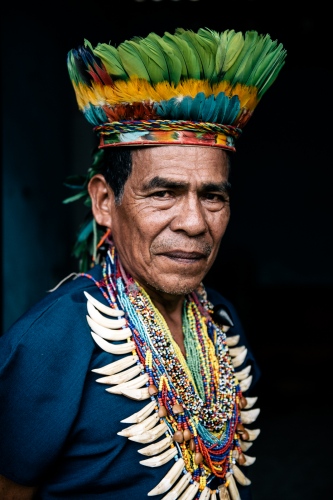











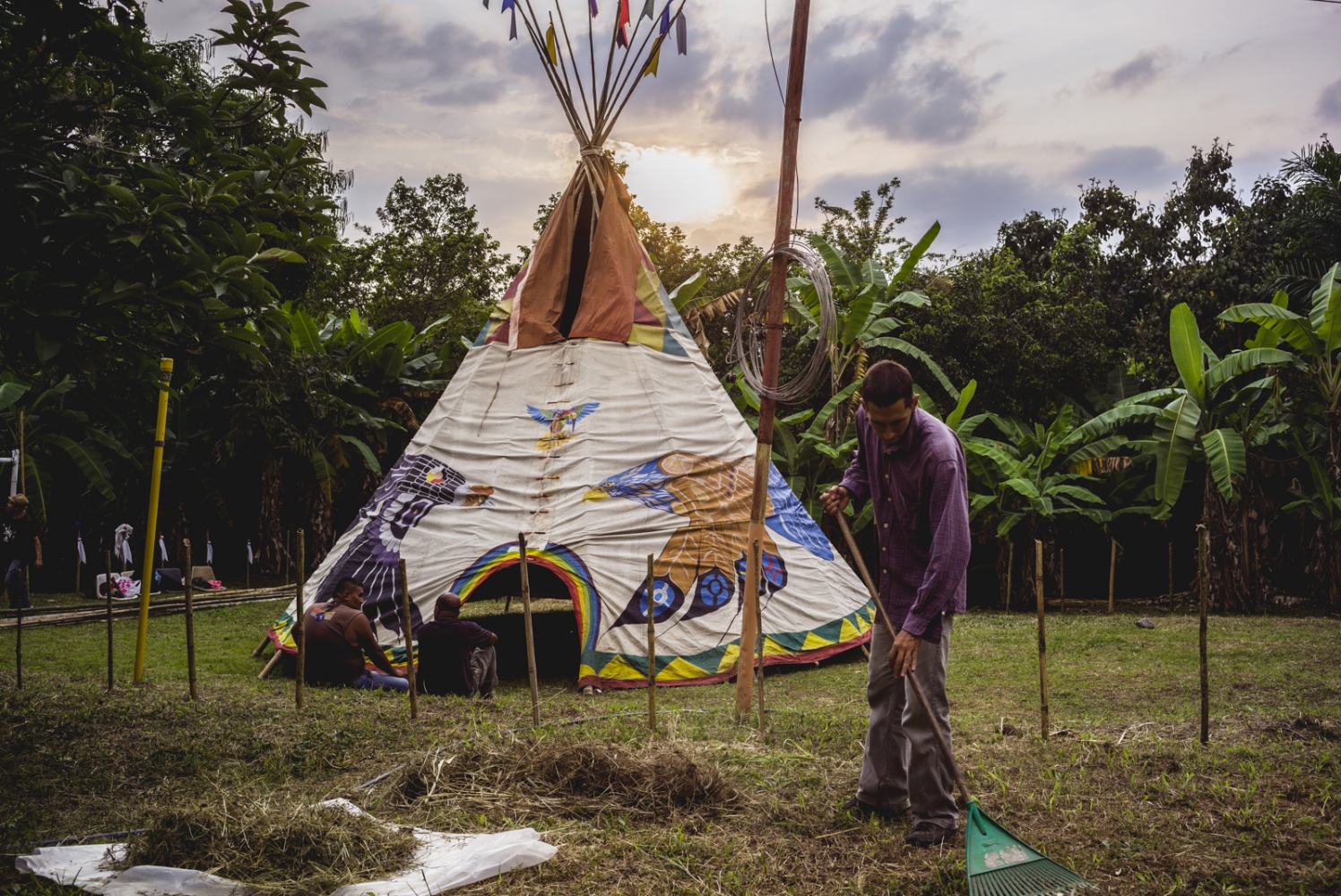
Alejandro rakes the camp grounds in preparation for the Vision Quest as the sun sets over the tipi and jungle forage.

Various medicine men, women, and indigenous elders sing to the plant spirit of Yagé and the sacred fire in the morning after the Opening Ceremony for the Vision Quest.
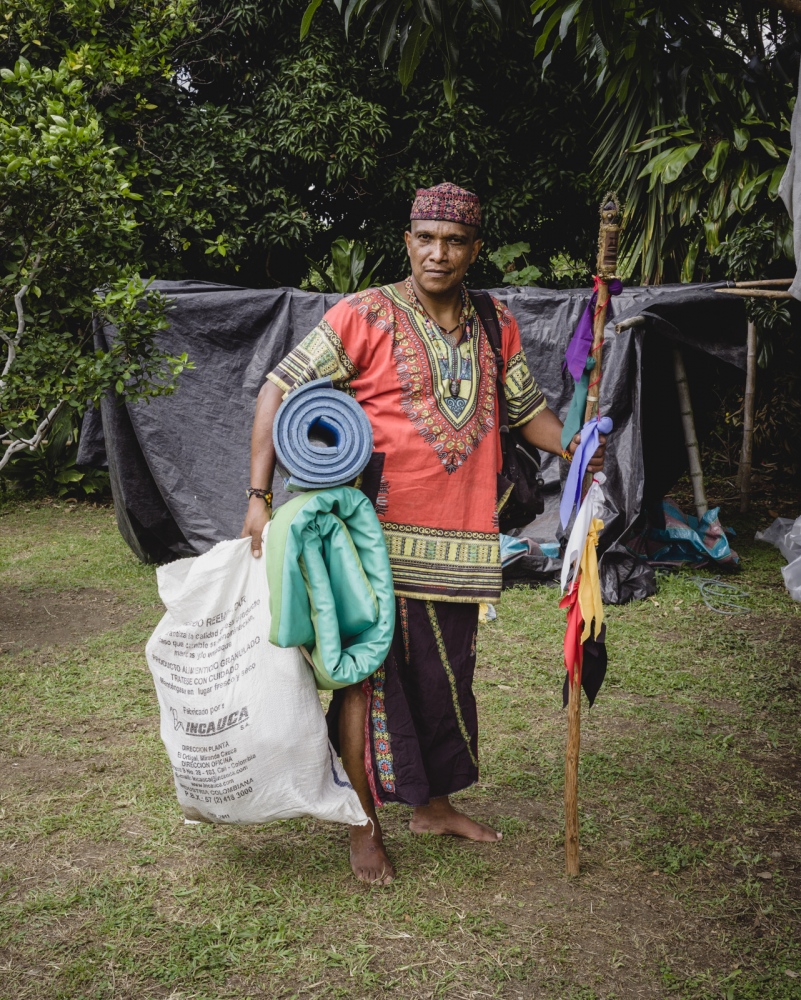
Traditional medicine man and 'yagecero' Argemiro, prepares his personal belongings for his 7th 'Hamblecha,' or 'Vision Quest'.
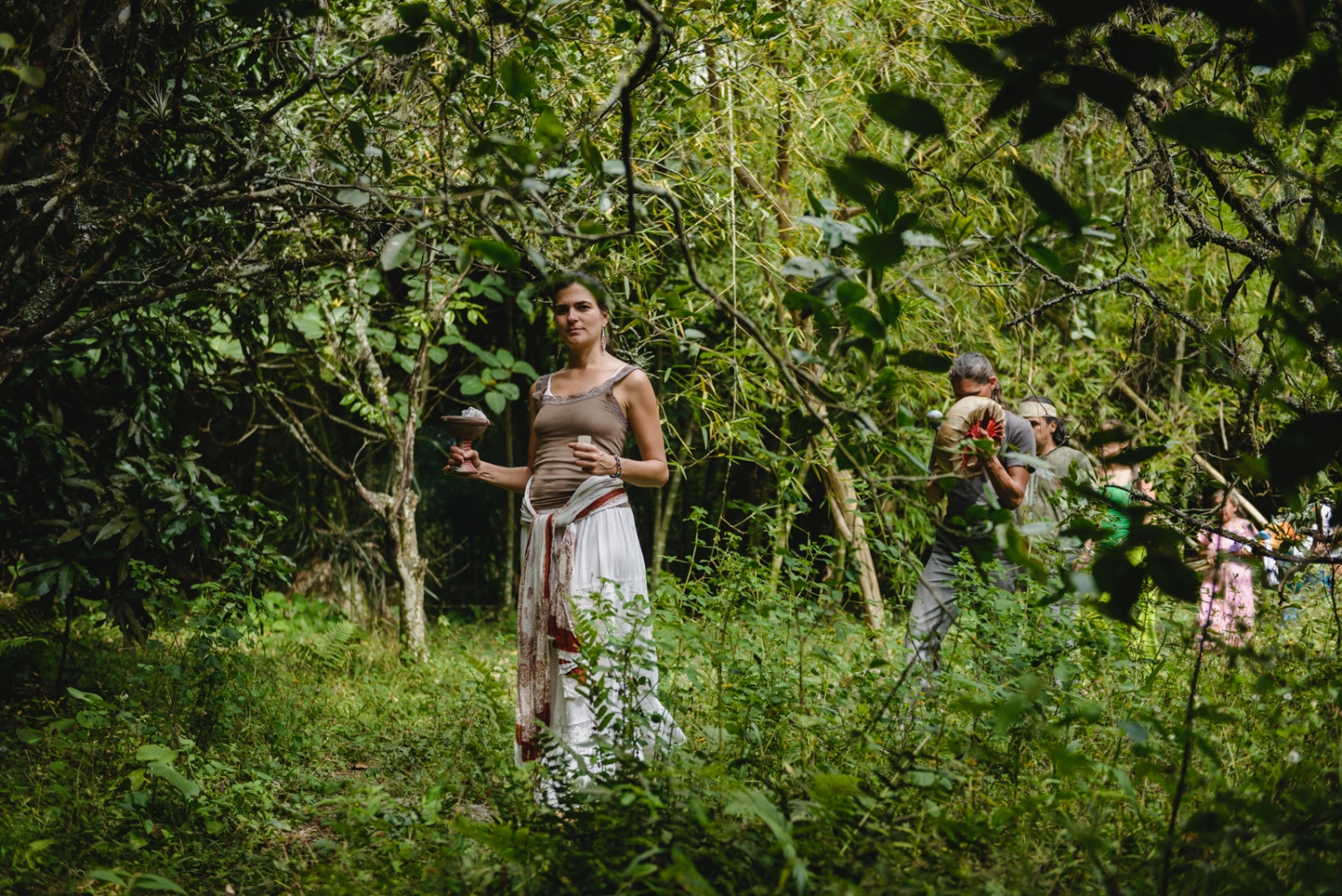
Smudging the path with 'copalera' in hand, Catalina leads the procession of visionaries through the jungle to their allocated places of power where they will be praying, meditating, and fasting for four days.

Taita Andres of the indigenous Embera people. Although young he is recognized as one of the high priests of his people, holding vast information about plant medicines and the invisible spirit world.
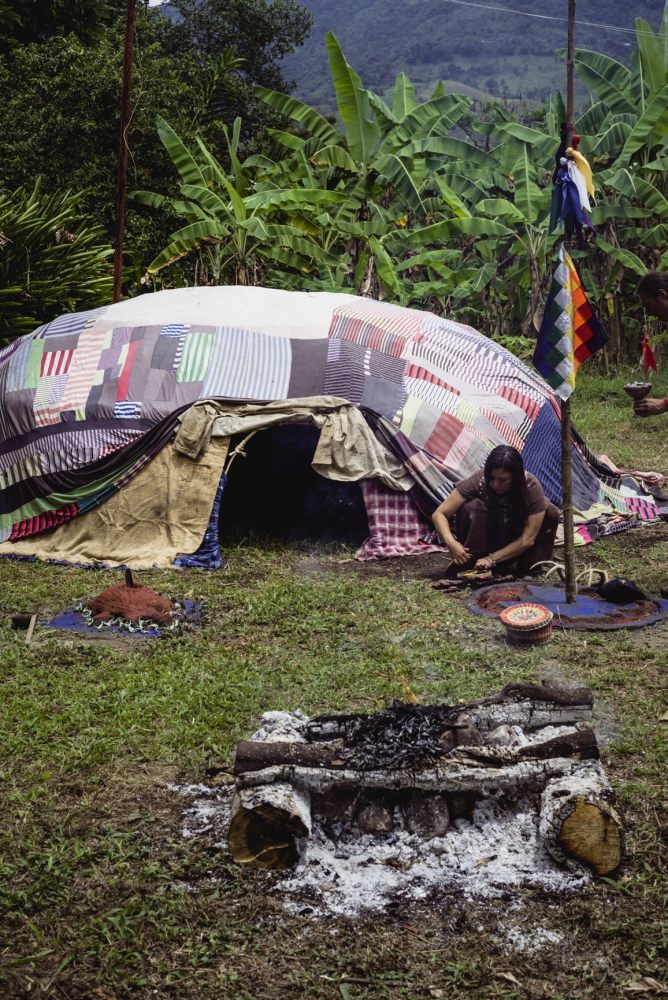
The sweat lodge, or 'Inipi", meaning "to be born again" in Lakota, is the place where visionaries begin their 4 day Vision Quest. Through sweating, chanting and praying, temporarily leave behind the world, their fears, their emotions, their sustenance, and their comforts in order to purify and receive the visions from the spirit of the mountain. Here they begin the four day fast without food, water, sleep, and speech.

Taita Leonel of the indigenous Embera people. A traditional 'curandero' and medicine man who works with the spirits of the tobacco plant and mushrooms.
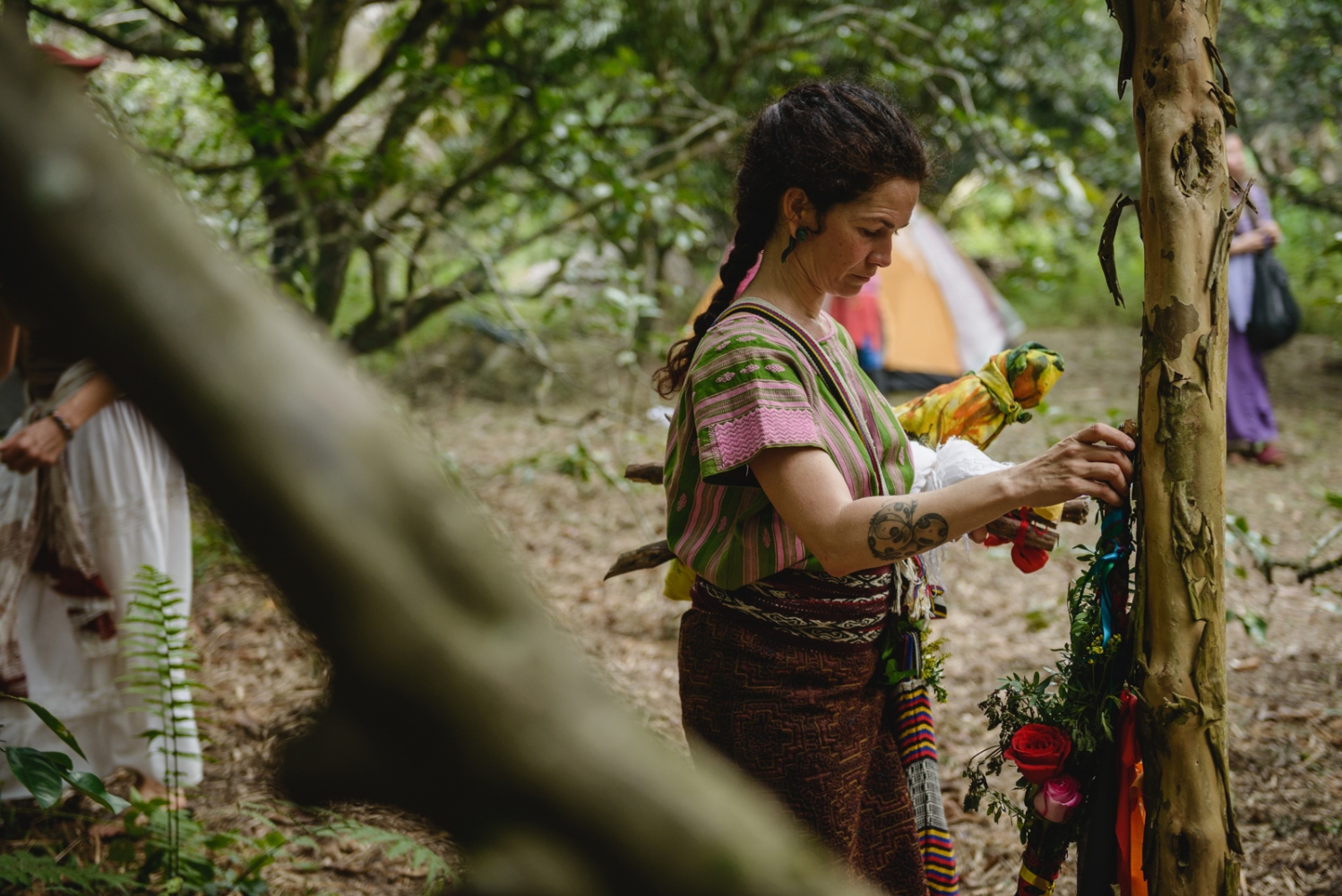
Rosa, one of the 21 visionaries who will be fasting the four days during the Vision Quest, leaves behind an offering of flowers to the spirit of the forest and the mountain.
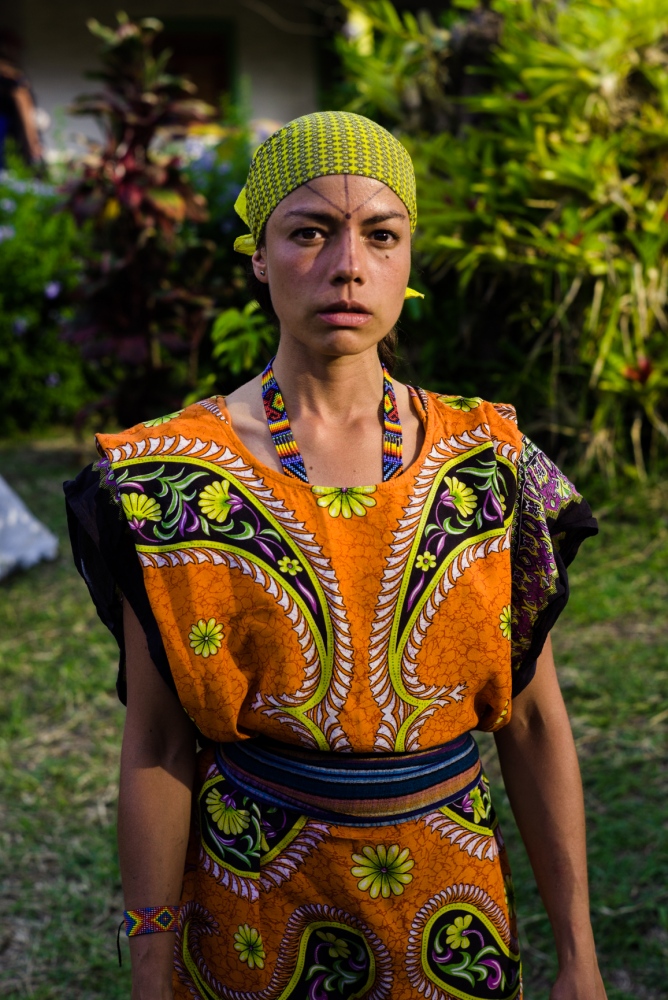
Carolina, one of the supports at the camp, who will eat, drink, sleep, and pray for the visionaries during their 4 day fast in the mountain.

Tomás, a traditional medicine man, originally from Mexico, smoking a cigar in a sacred way to pray for the visionaries and for the wellbeing of all attendees during the Vision Quest.
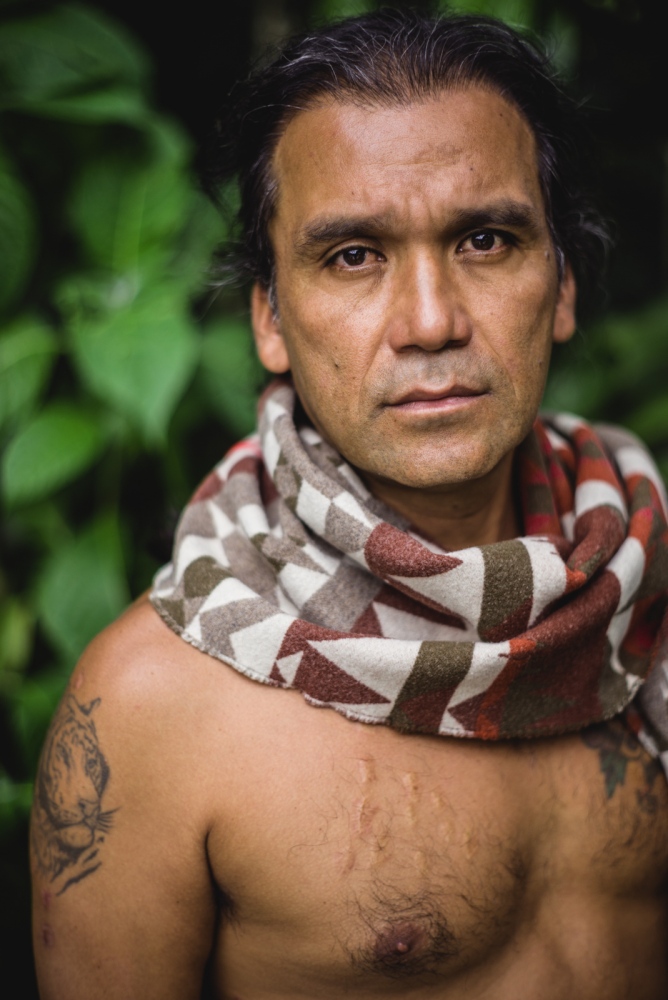
Mau Tanka, a powerful medicine man of the Red Road and Sun Dancer, is known to be responsible for introducing the Lakota and First Nation traditions of the Native Americans to Colombia.
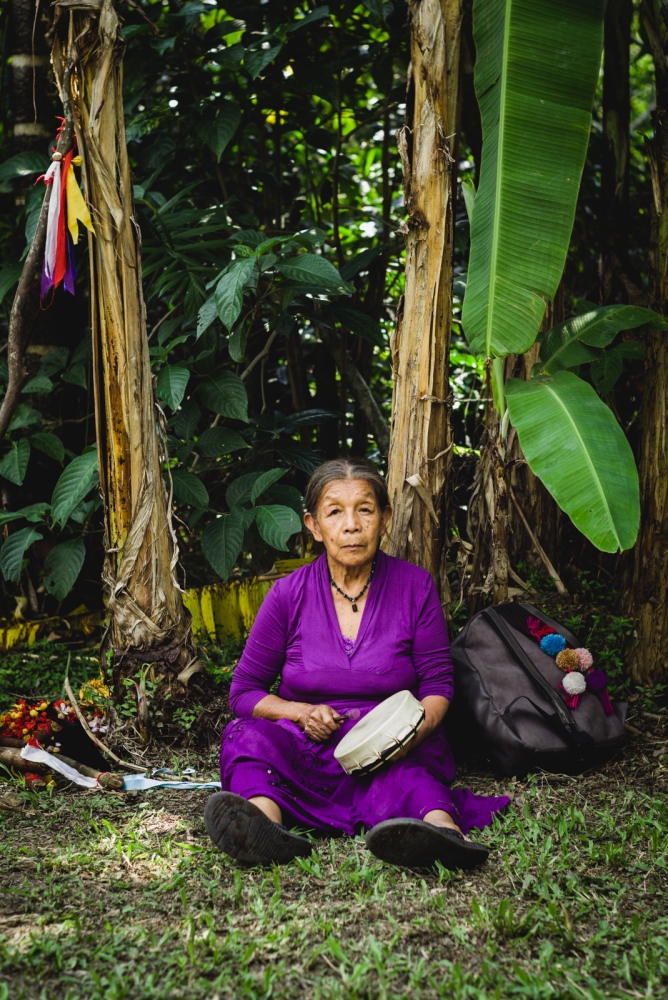
Abuela Ana Lucia of the indigenous Embera people of Colombia, playing her small drum after having quested for 4 days during the Vision Quest.

The visionaries return from questing and fasting 4 days in the mountain, bringing their prayer staffs and offerings to be burned to the fire.
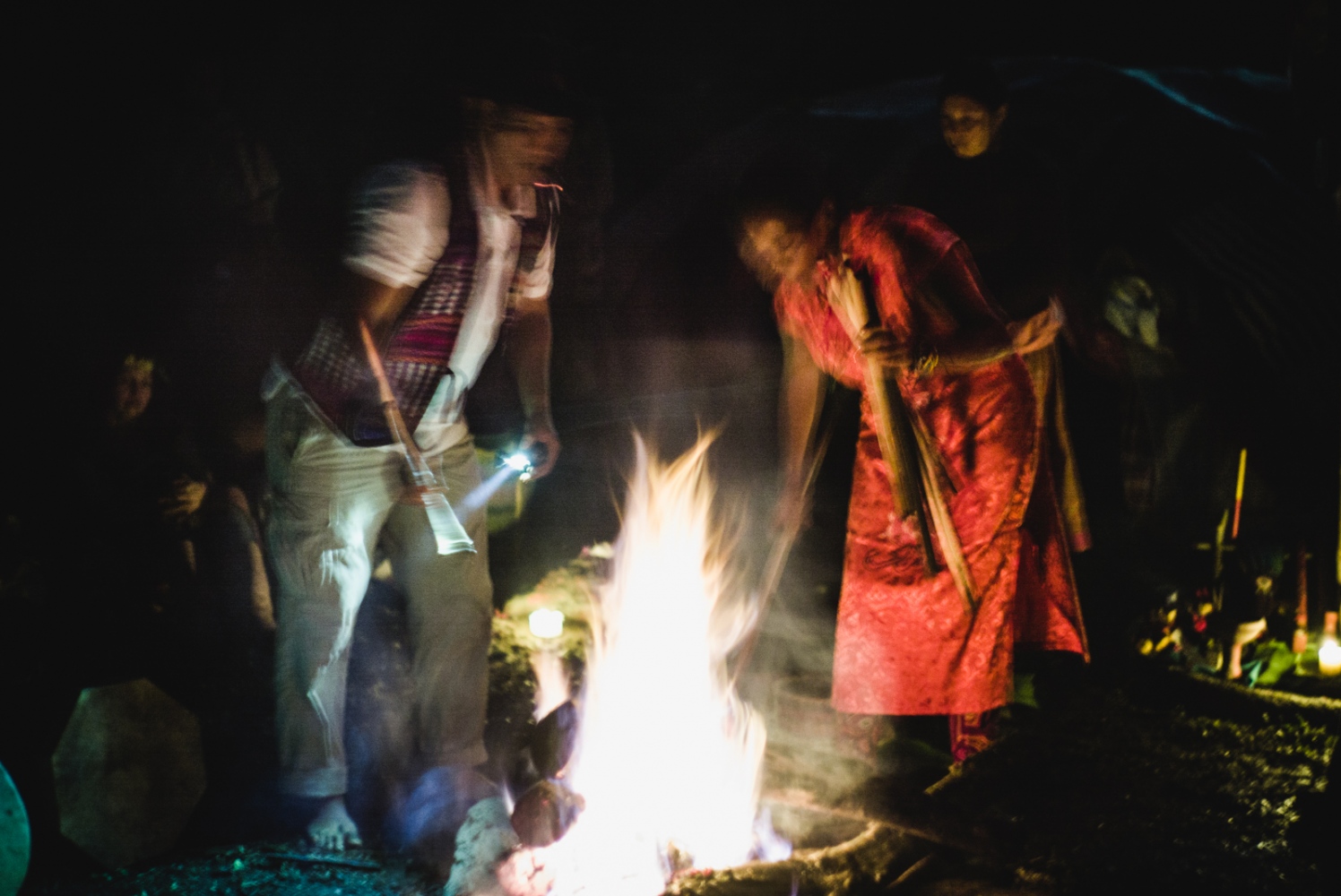
Visionaries offer their prayers to the sacred fire during the Closing Ceremony of the Vision Quest.
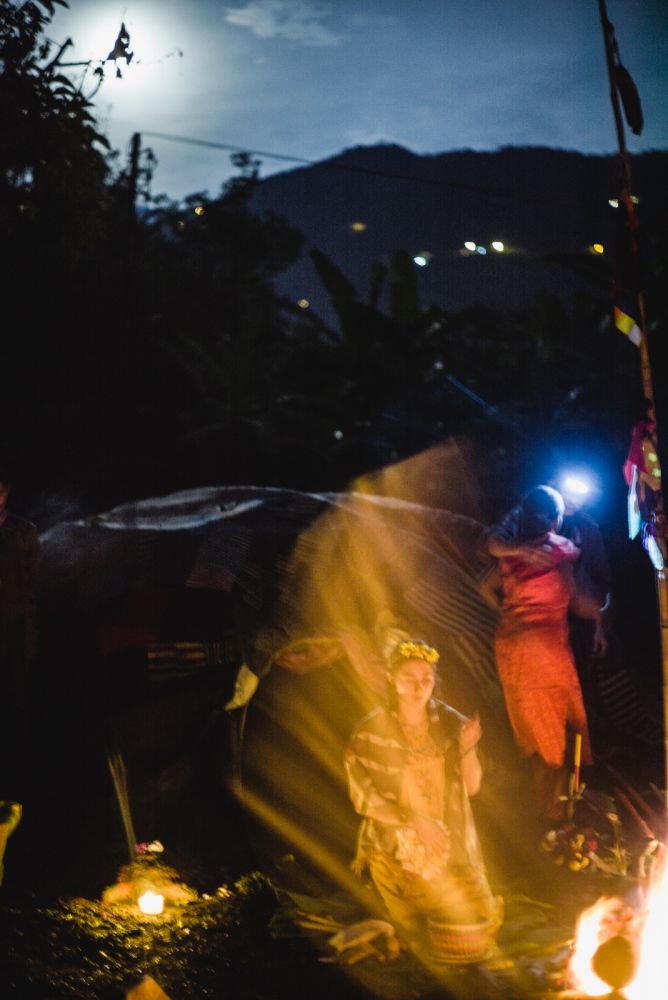
Visionary Danit makes her prayers and offerings to the sacred fire under a full moon during the Vision Quest.
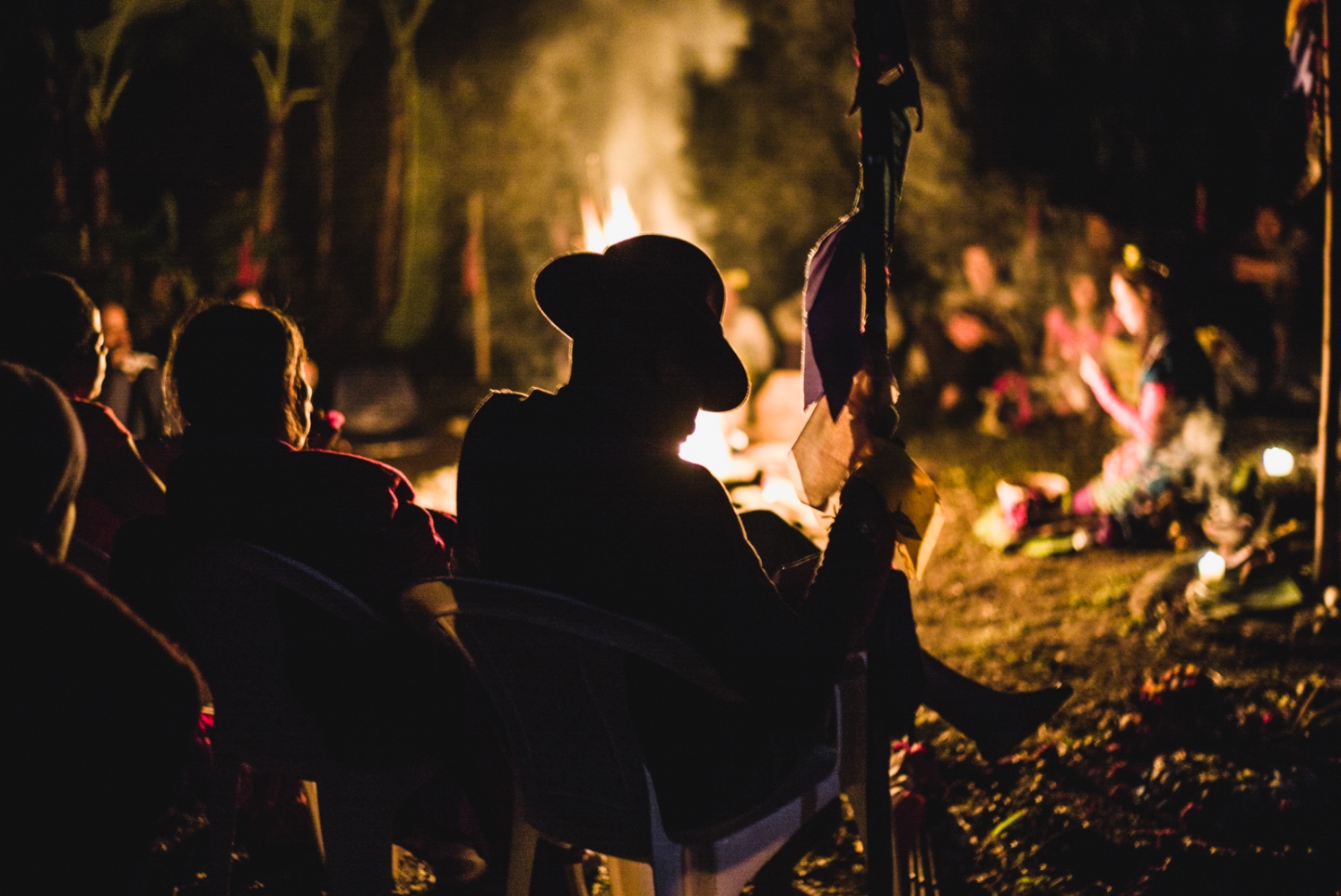
Visionaries and Supports gather around the sacred fire to bear witness to the prayers the questers offer up to the sacred fire during the Vision Quest.
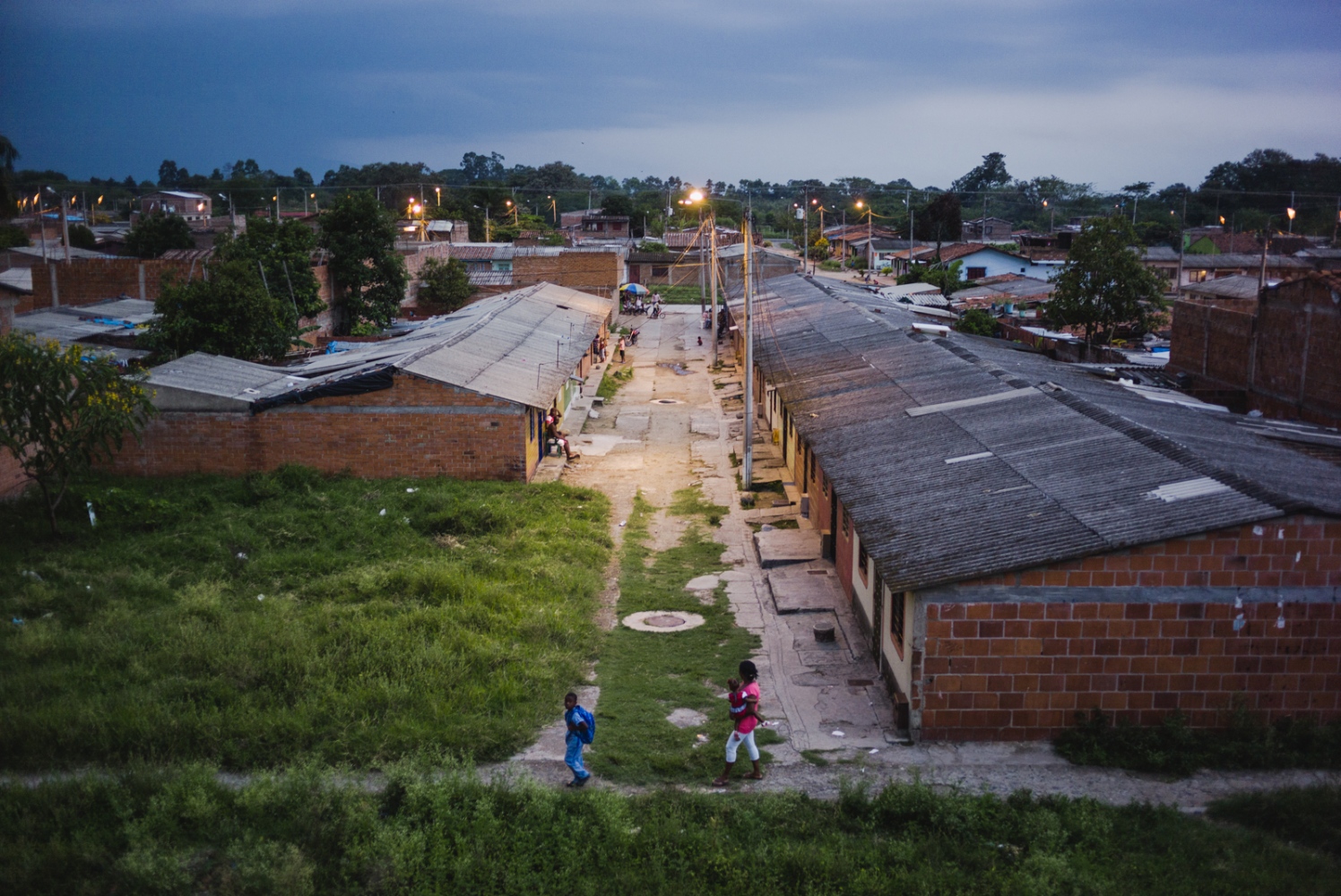
Florida, Valle de Cauca, Colombia, home and birthplace of various medicine men and women, including Citlali, Argemiro, and Mau Tanka.
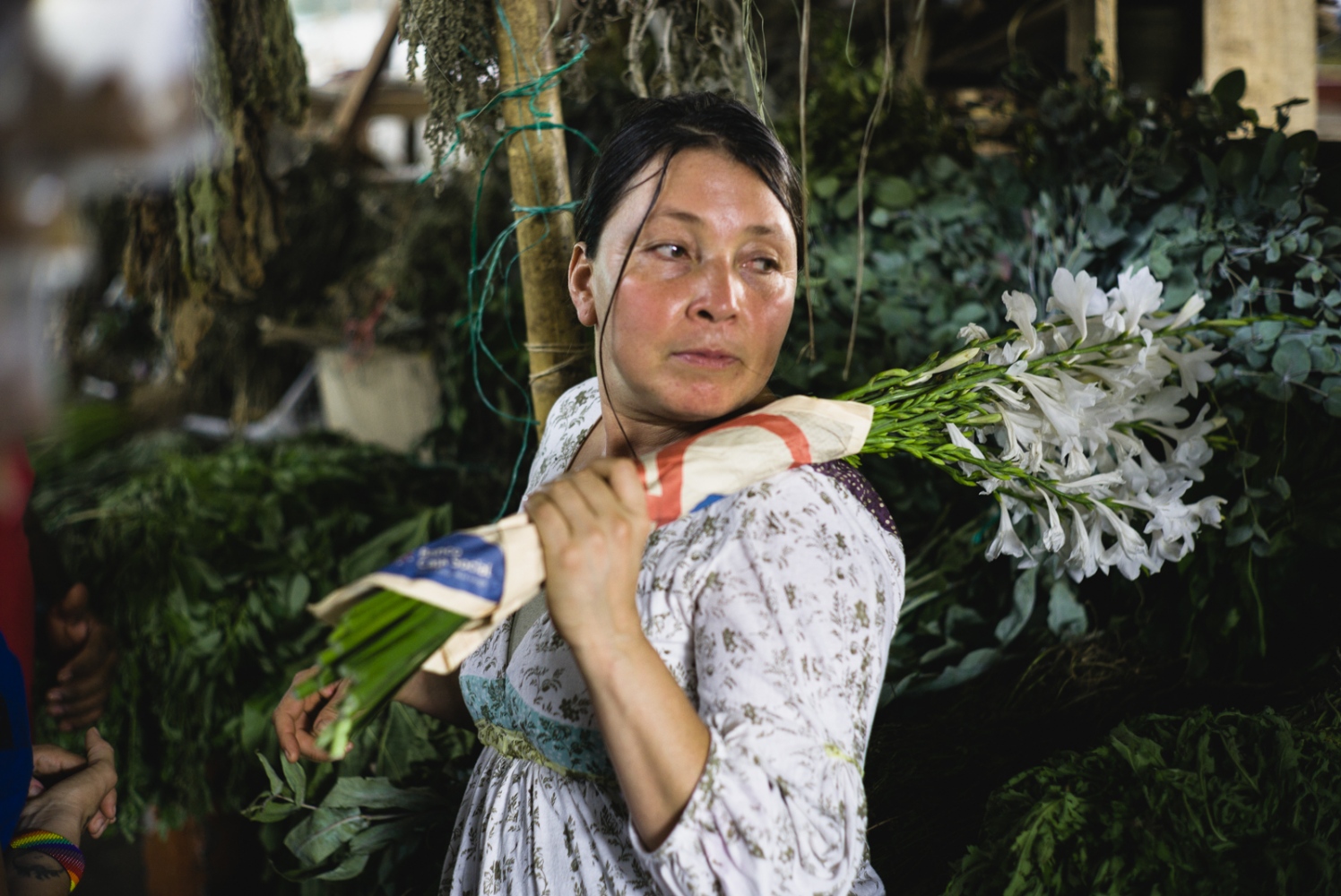
Citlali, a 'yagecera,' or traditional medicine woman, collects flowers and medicinal plants at the local market in Florida, Colombia.
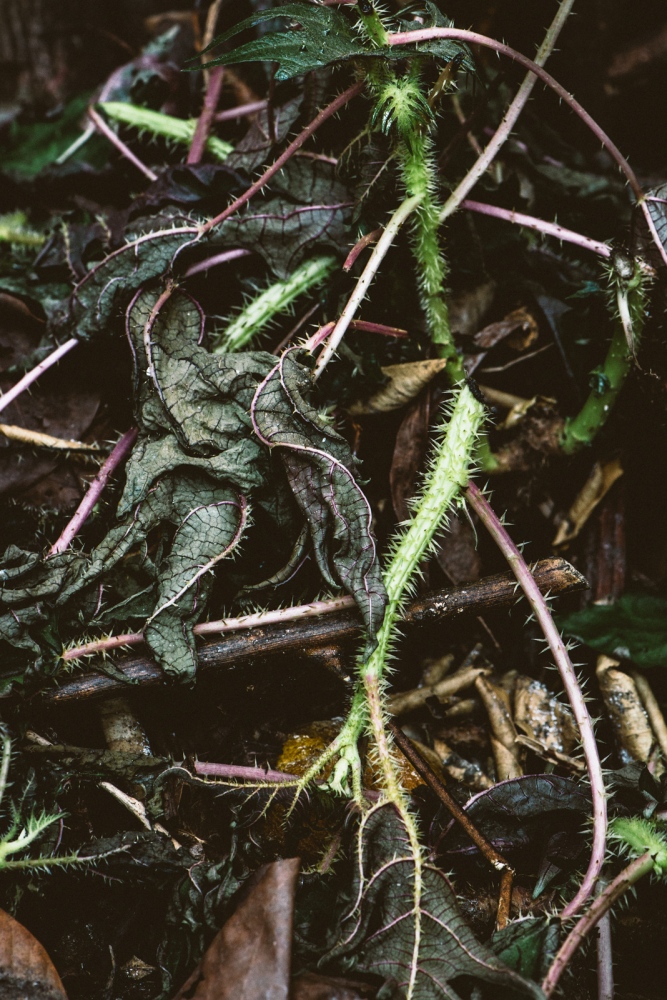
Ortiga, a medicinally purifying plant, covered in large thorns that emit a numbing venom, inflaming the skin when applied by strong (or soft) blows of the branch upon a person. The plant is used to stimulate circulation, the immune system, and to clean the person energetically.
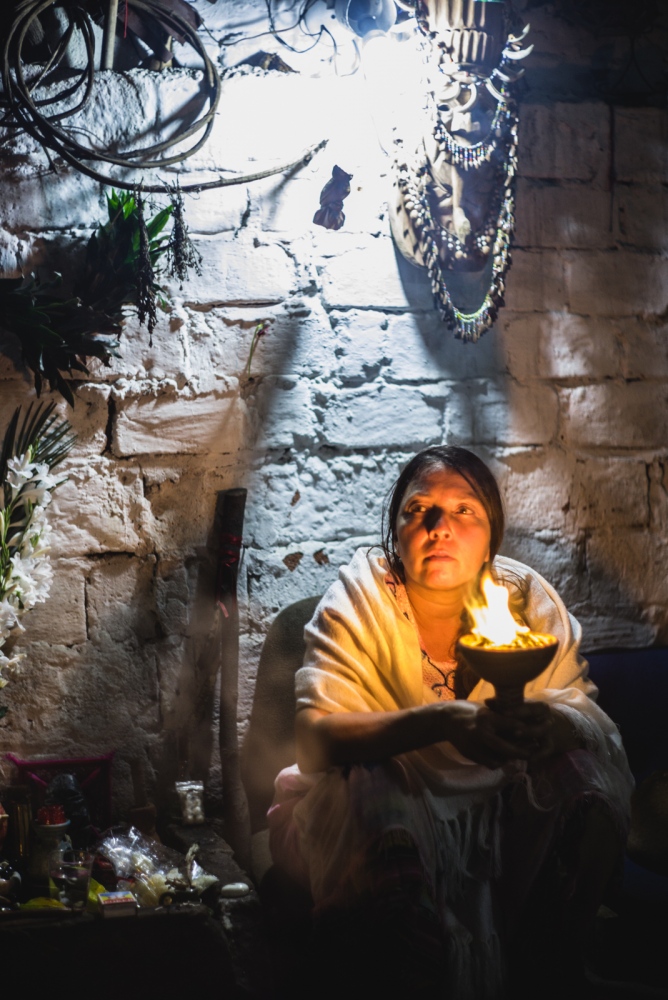
Citlali, 'yagecera' and traditional medicine woman, smudges her home with a 'copalera' to purify the energy of the space.
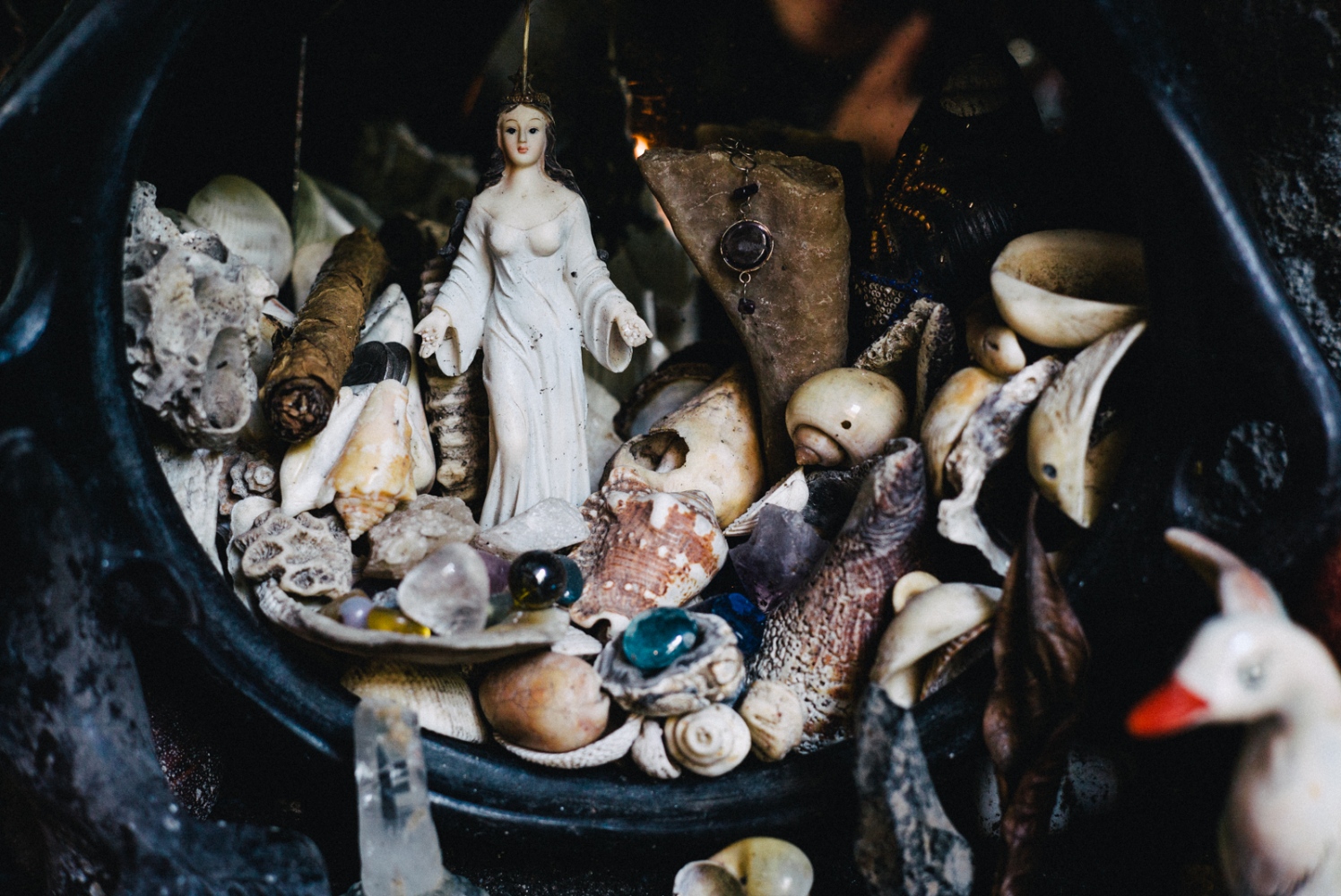
Citlali's altar, honoring the Orixa, Yemanjá, deity of water and of the ocean. Besides working with plant medicines, Citlali has a long history with the Yeruba traditions of Africa, the Caribbean, and Latin America.
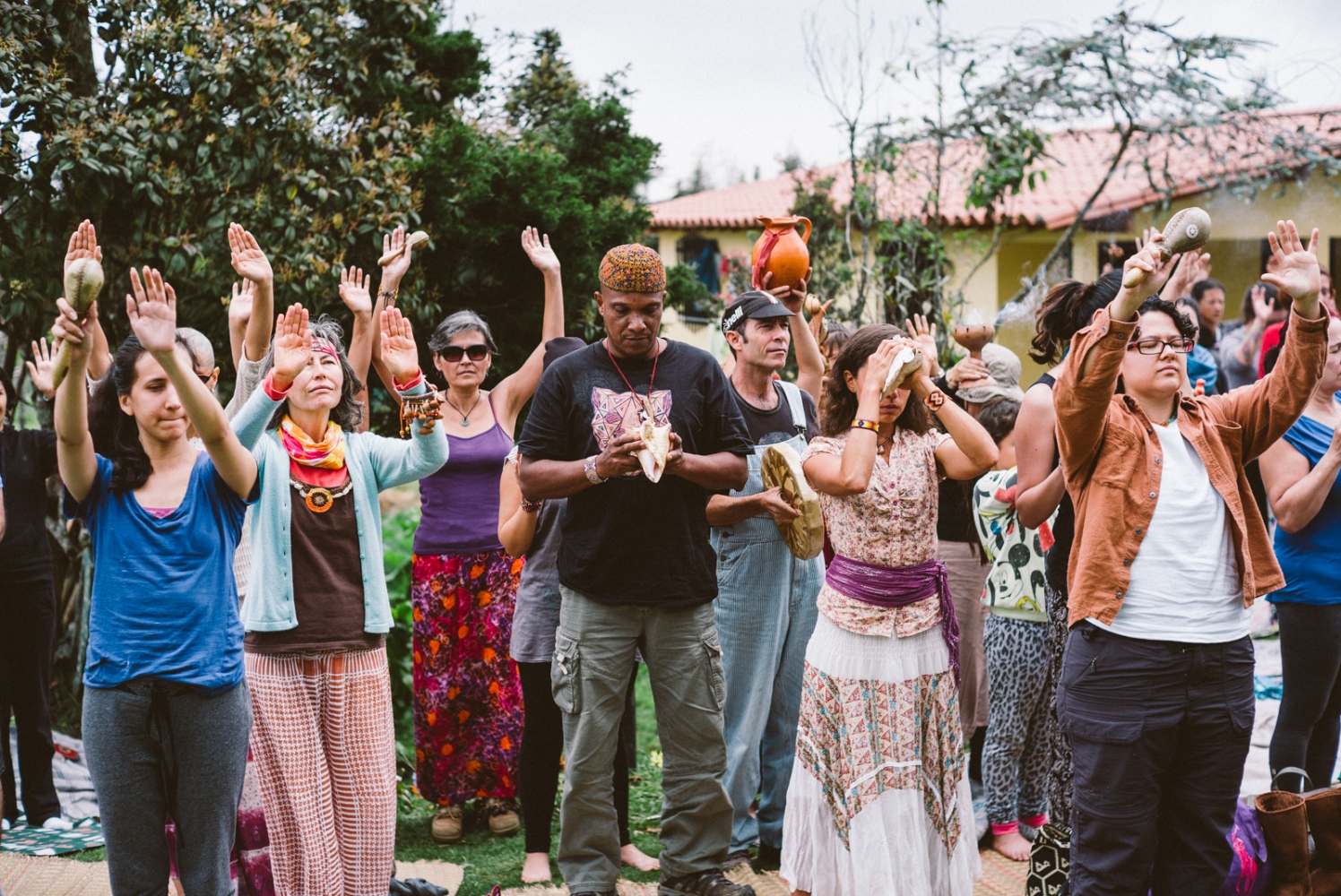
Argemiro, 'yagecero' and traditional medicine man prepares to blow the conch shell to convoke and salute the 7 directions of the universe during a prayer and offering to the spirit of the water with a large group of attendees.

Carolina and Giscela smoke pure tobacco cigars whilst making a women's offering to the Earth outside their home in Santa Elena, Colombia.
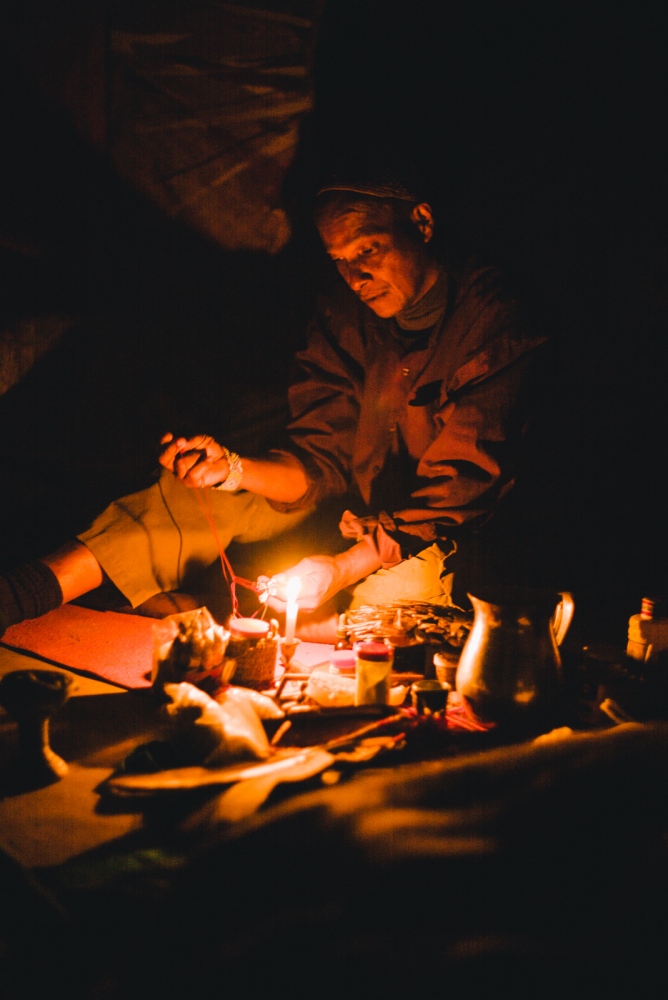
Traditional medicine man and 'Yagecero', Argemiro makes a small prayer to the medicine spirit whilst leading a yagé ceremony in the dark in Santa Elena, Colombia.
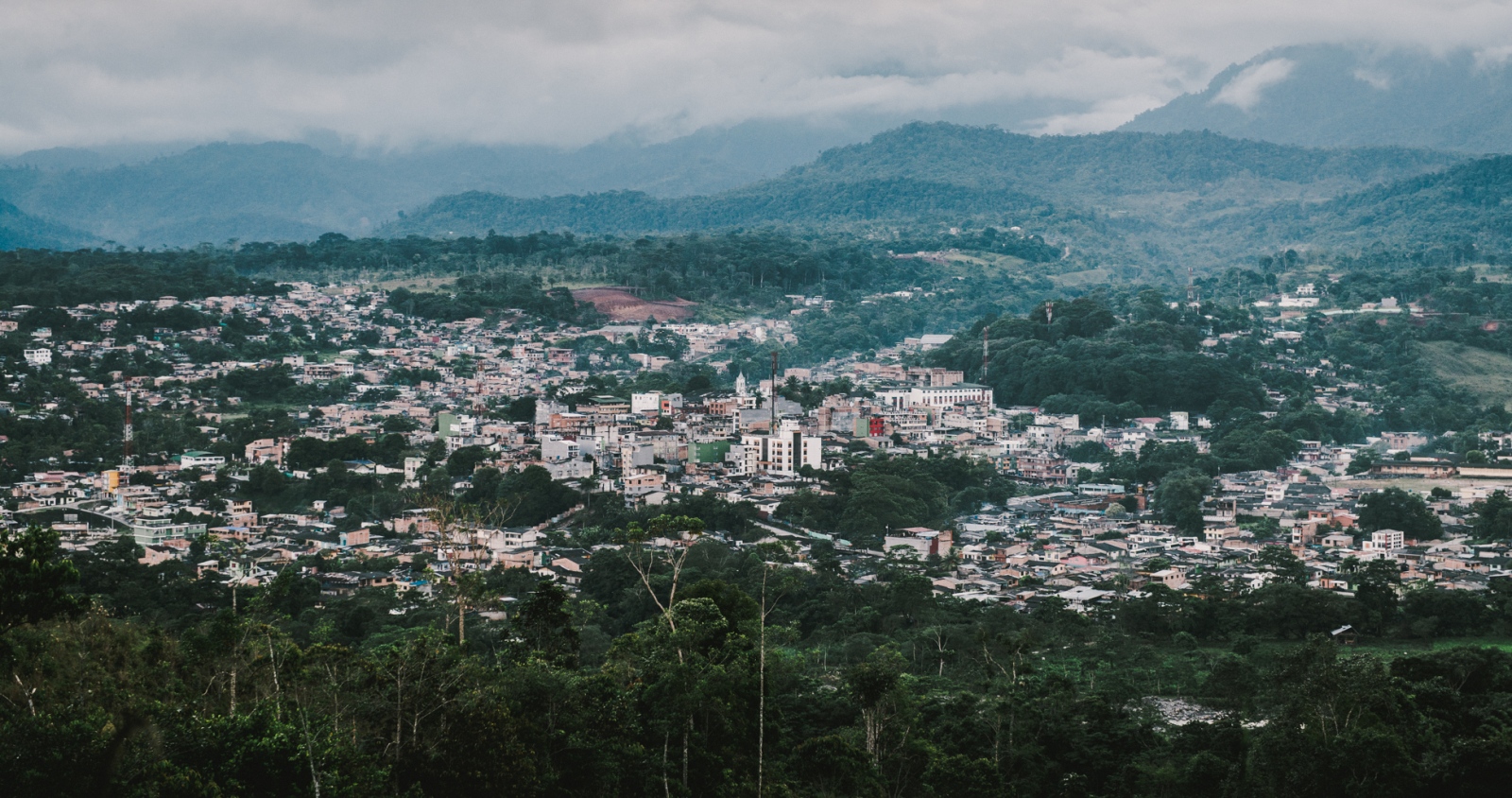
The city of Mocoa, Putumayo, Colombia, seen from the jungle across the river.

Argemiro walking up to the farm of his teacher and 'curandero', Taita Juan Yaiguaje in the jungles of Mocoa, Putumayo, Colombia.
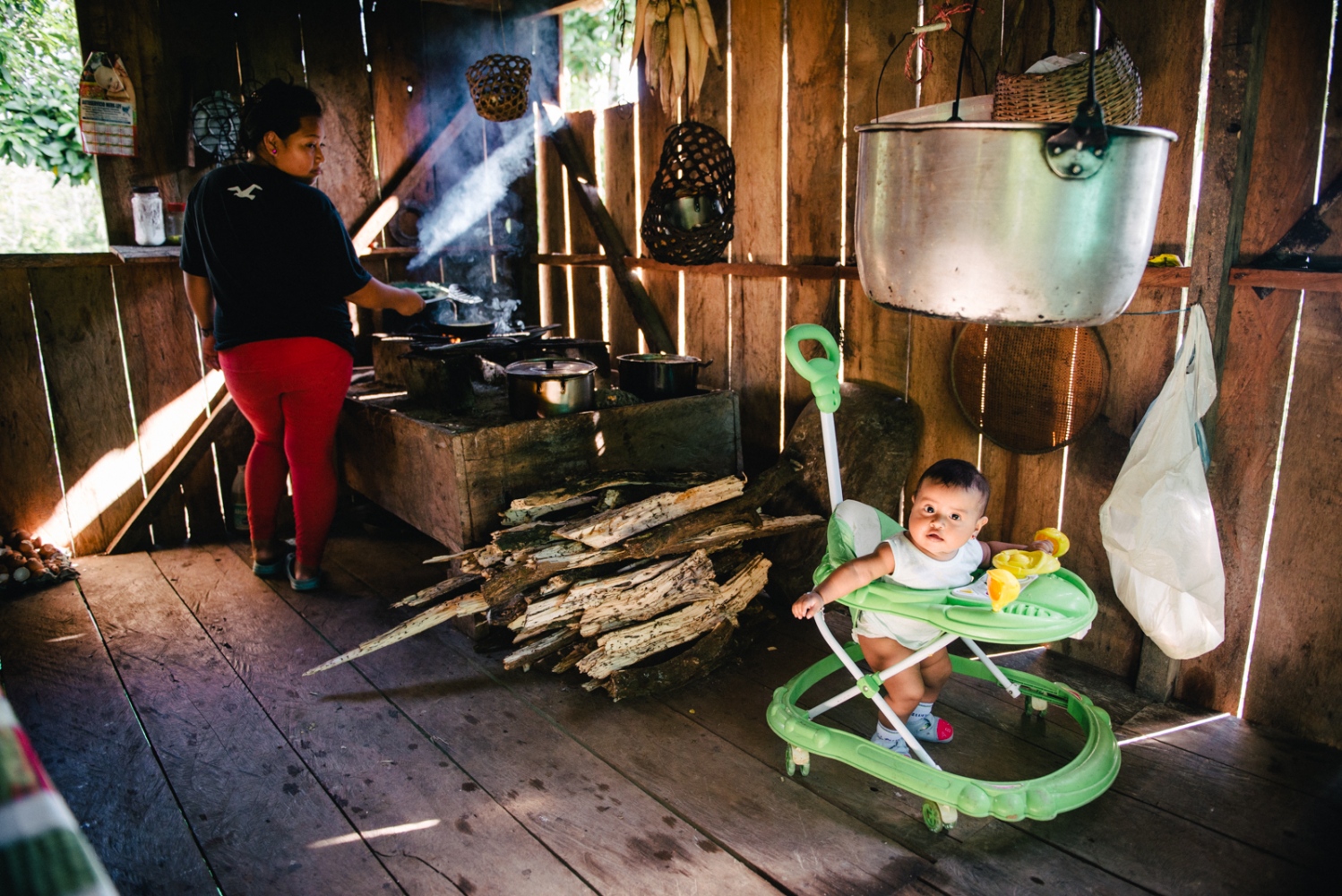
The daughter of Taita Juan prepares food with a traditional firewood stove as her baby girl plays about the kitchen. Mocoa, Putumayo, Colombia.
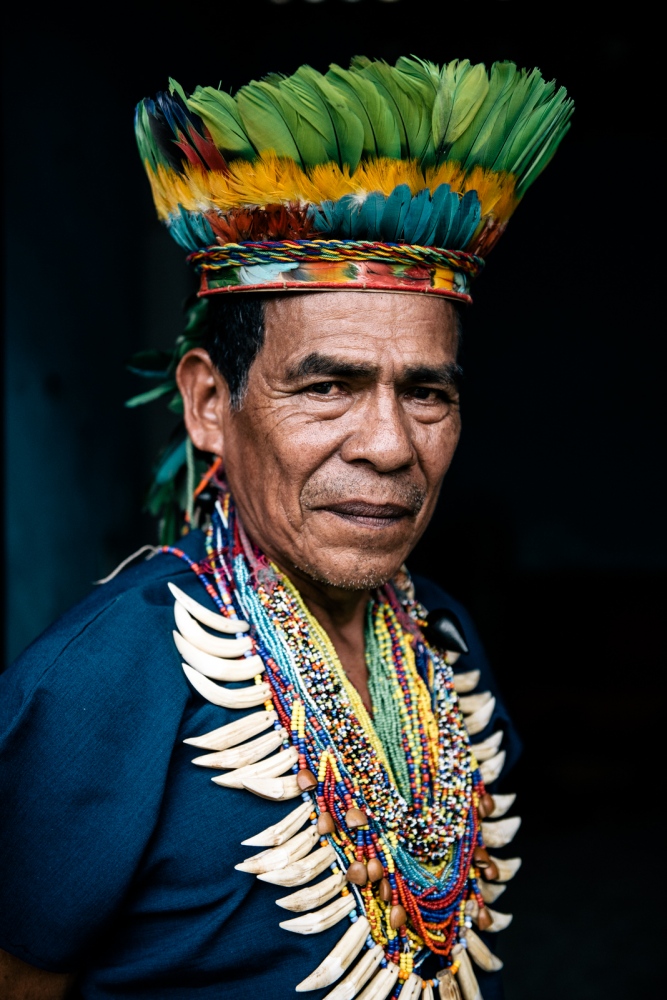
Taita Juan Yaiguaje in his home in Mocoa, Colombia, traditionally adorned in ceremonial garb of jaguar teeth and beaded necklaces, plus crown of guacamayu feathers. Taita Juan is a traditional 'medico', or traditional healer of the indigenous Sciona people of Putumayo. He is one of the most revered and respected elder shamans of his community. He specializes with the Yagé brew, or Ayahuasca vine, a powerful plant remedy known to cure any sort of illness on all levels, physical, emotional, mental, and spiritual.⠀
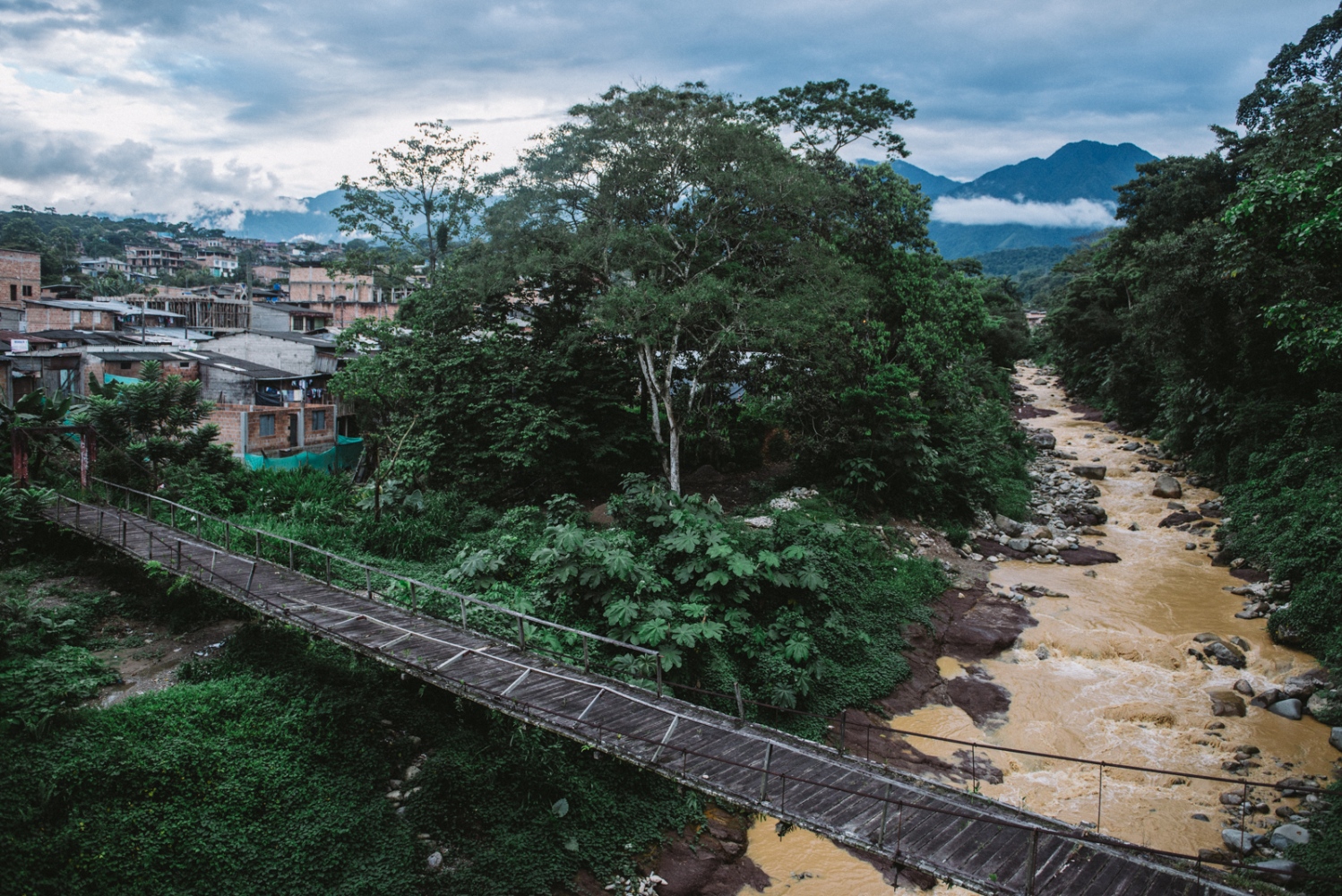
El Rio Putumayo in Mocoa, Putumayo, Colombia.
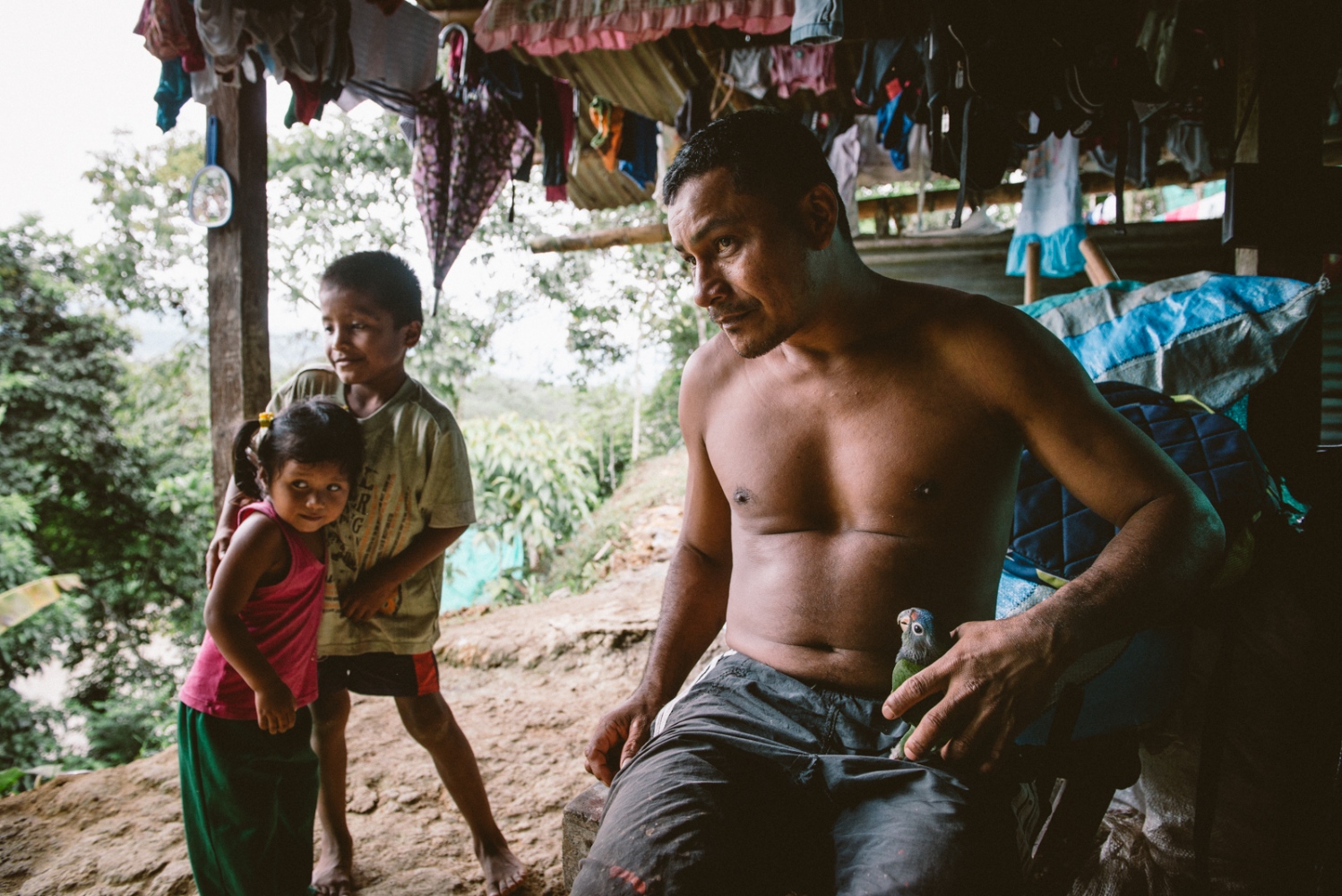
Traditional healer and medicine man, ‘Taita’ Carlos Chindoy and his children in their make shift home on a cliff in Mocoa, Putumayo, Colombia. Taita Carlos is a well known ‘curandero’ who heals his patients with the Yagé (ayahuasca) plant of the Amazons which he also prepares in a ceremonial way for his fellow community of indigenous Sciona healers.⠀
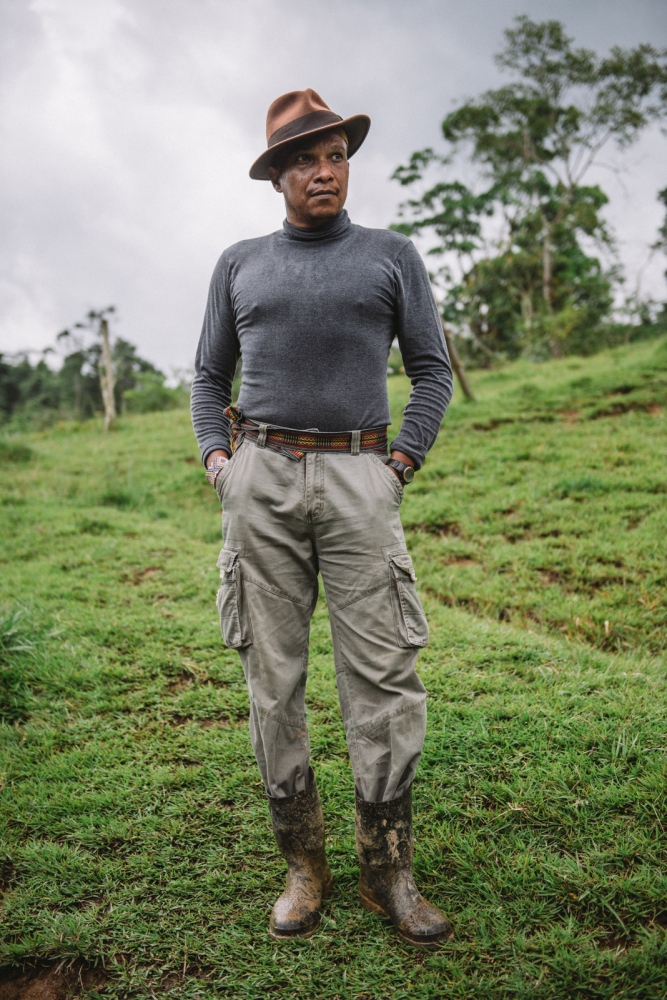
Traditional healer or 'Yagecero,' Argemiro combing the hills near Mocoa, Putumayo. Argemiro specializes in healing his patients with the Yagé plant alongside others. Yagé also referred to as Ayahuasca is known as traditional plant medicine used by shamans to heal physical, mental, emotional, or spiritual illnesses. Often referred as a "psychodelic drug" by Westerners, traditional healers understand it and respect it as a "visionary plant spirit".⠀
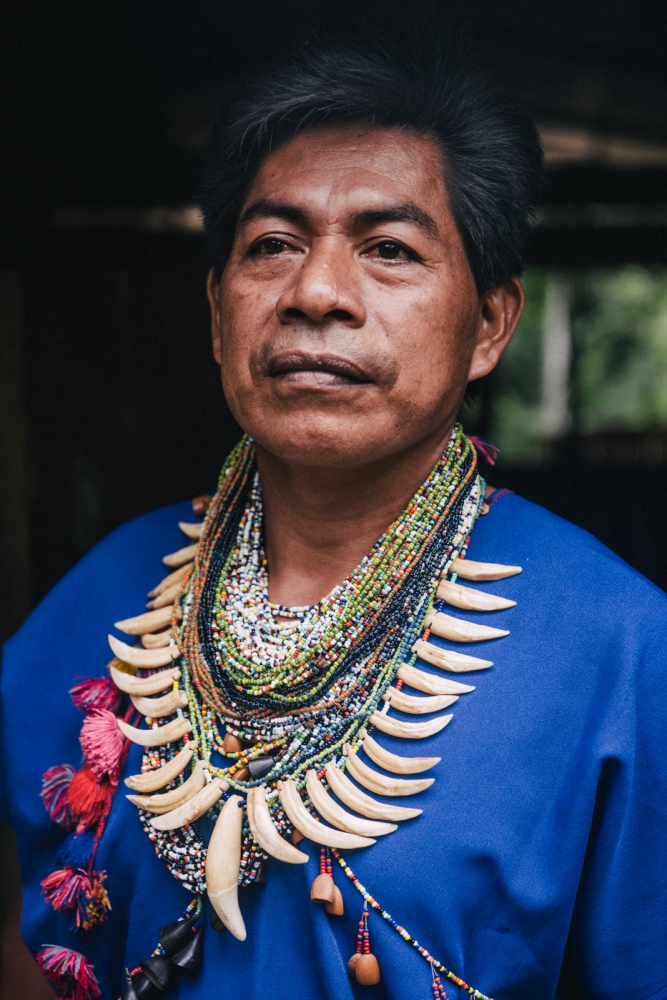
Taita Edgar in the morning after a ceremony of Yagé. Taita Edgar is a traditional 'medico', or traditional healer of the indigenous Sciona people of Putumayo and the student of Taita Juan Yaiguaje. He specializes with the Yagé brew, or Ayahuasca vine, a powerful plant remedy known to cure any sort of illness on all levels, physical, emotional, mental, and spiritual.
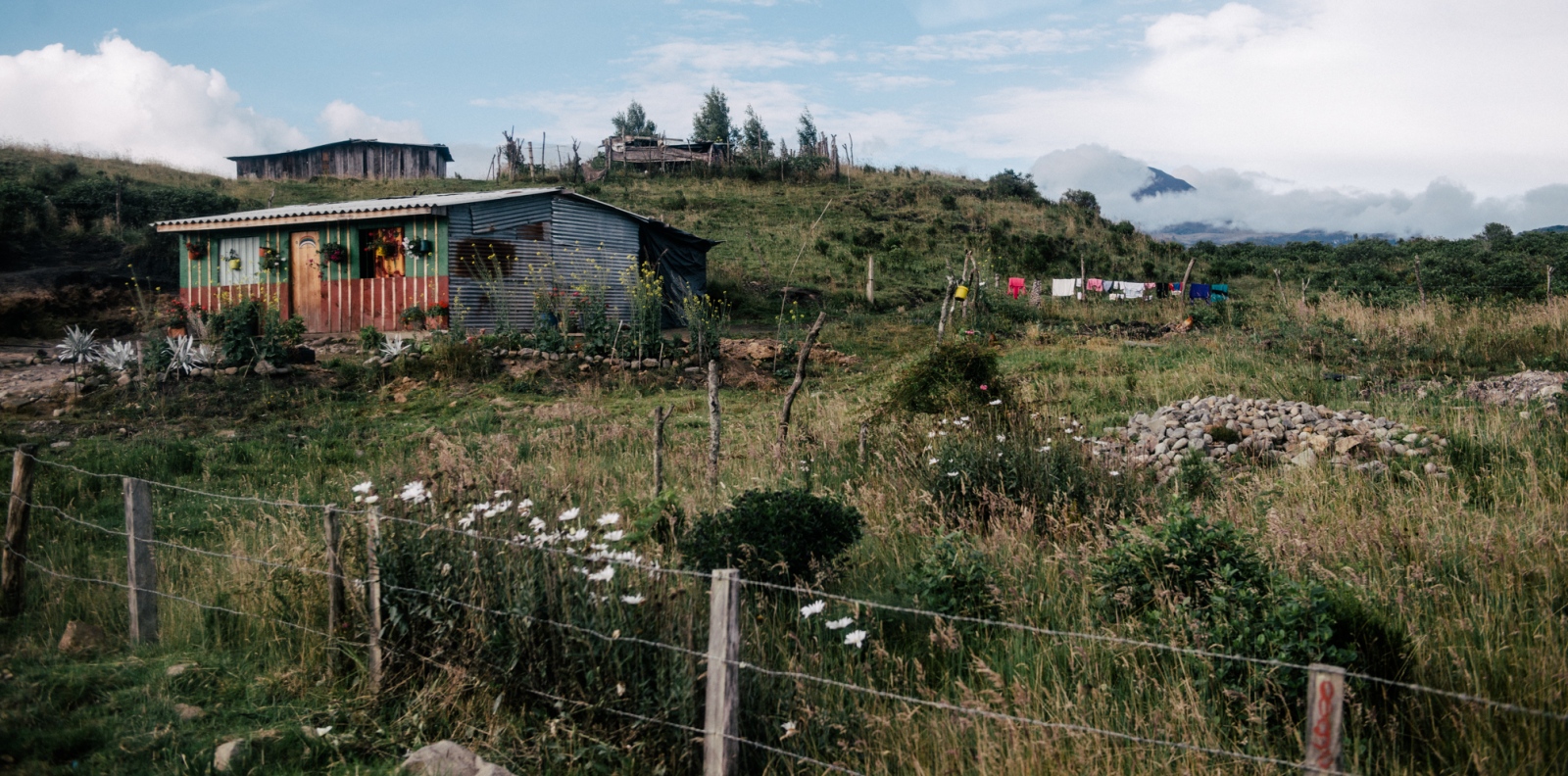
A small farm and vegetation on the road from Mocoa to Pasto, Colombia.
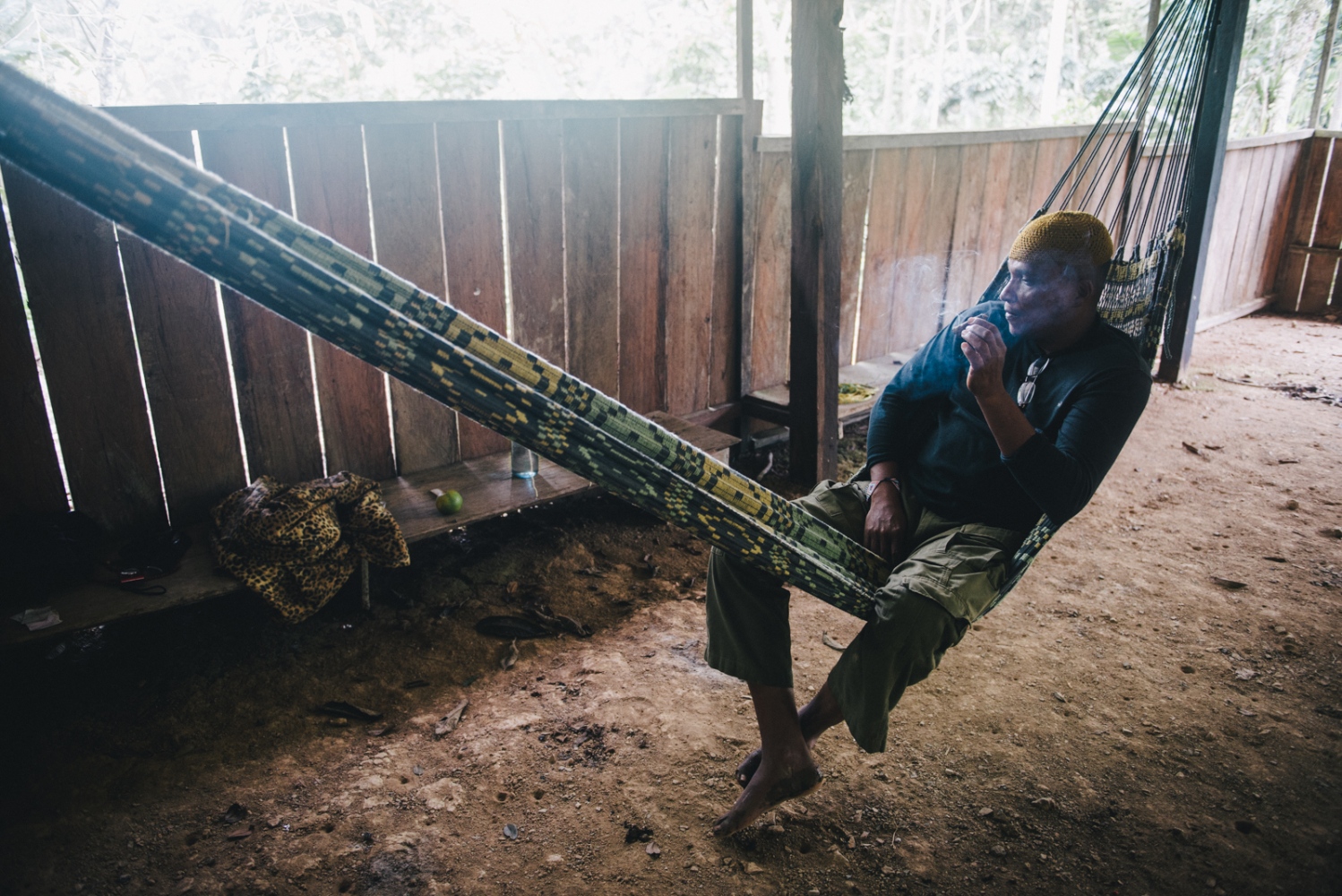
Traditional ‘curandero’ or healer, Argemiro praying with his tobacco after a hard night's work with the medicine in the maloka near Mocoa, Colombia. Argemiro is a traditional 'curandero' or healer from Cali, Colombia who works with plants of power, particularly, the plant medicine known as Yagé, or the Colombian version of Ayahuasca. Altough he is a man who integrates many different traditions, religions, and beliefs into his practice, he finds the majority of his wisdom and knowledge from the Taitas, or indigenous shamans, and the Yagé plant itself.
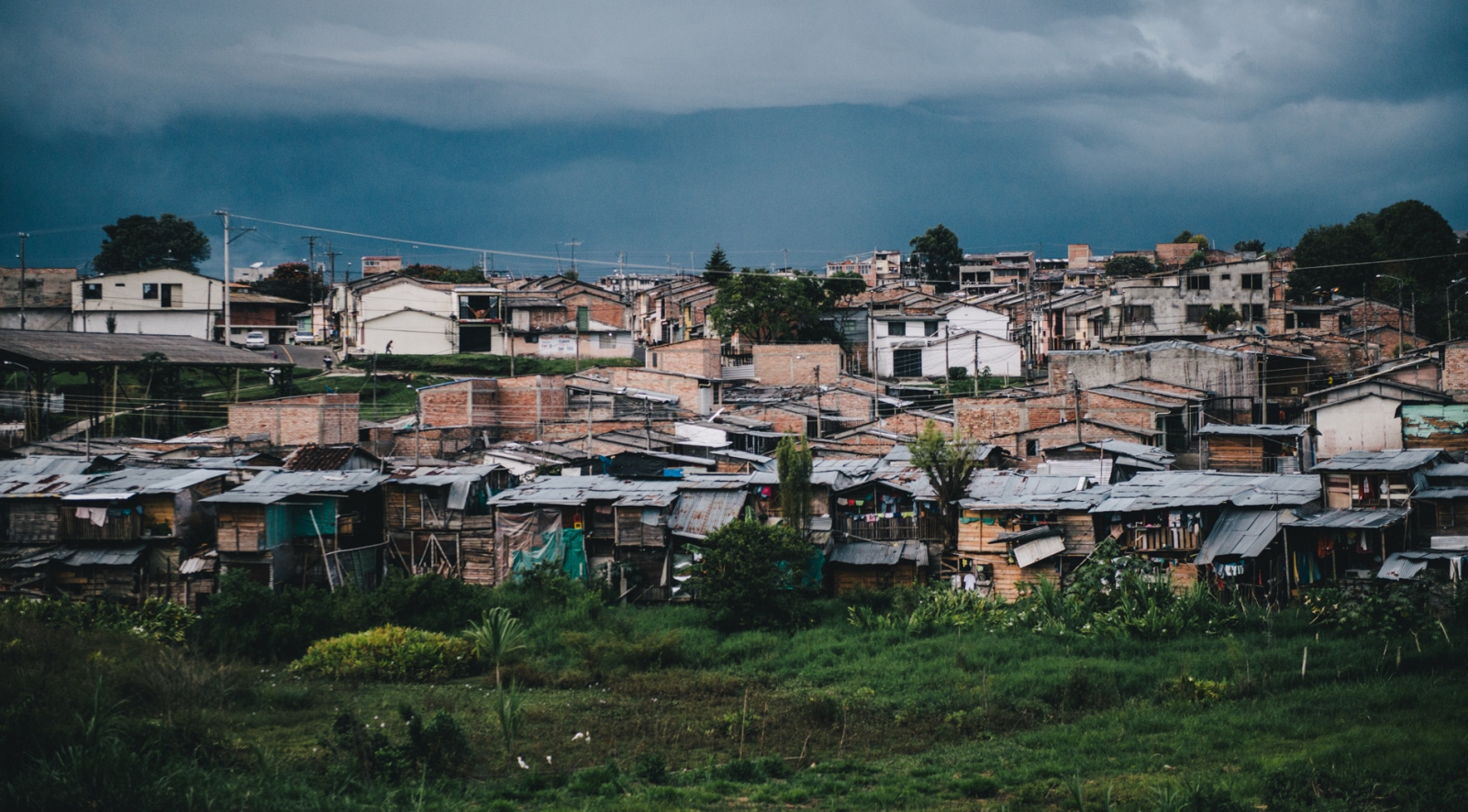
Makeshift housing on the road from Mocoa to Pasto, Colombia.
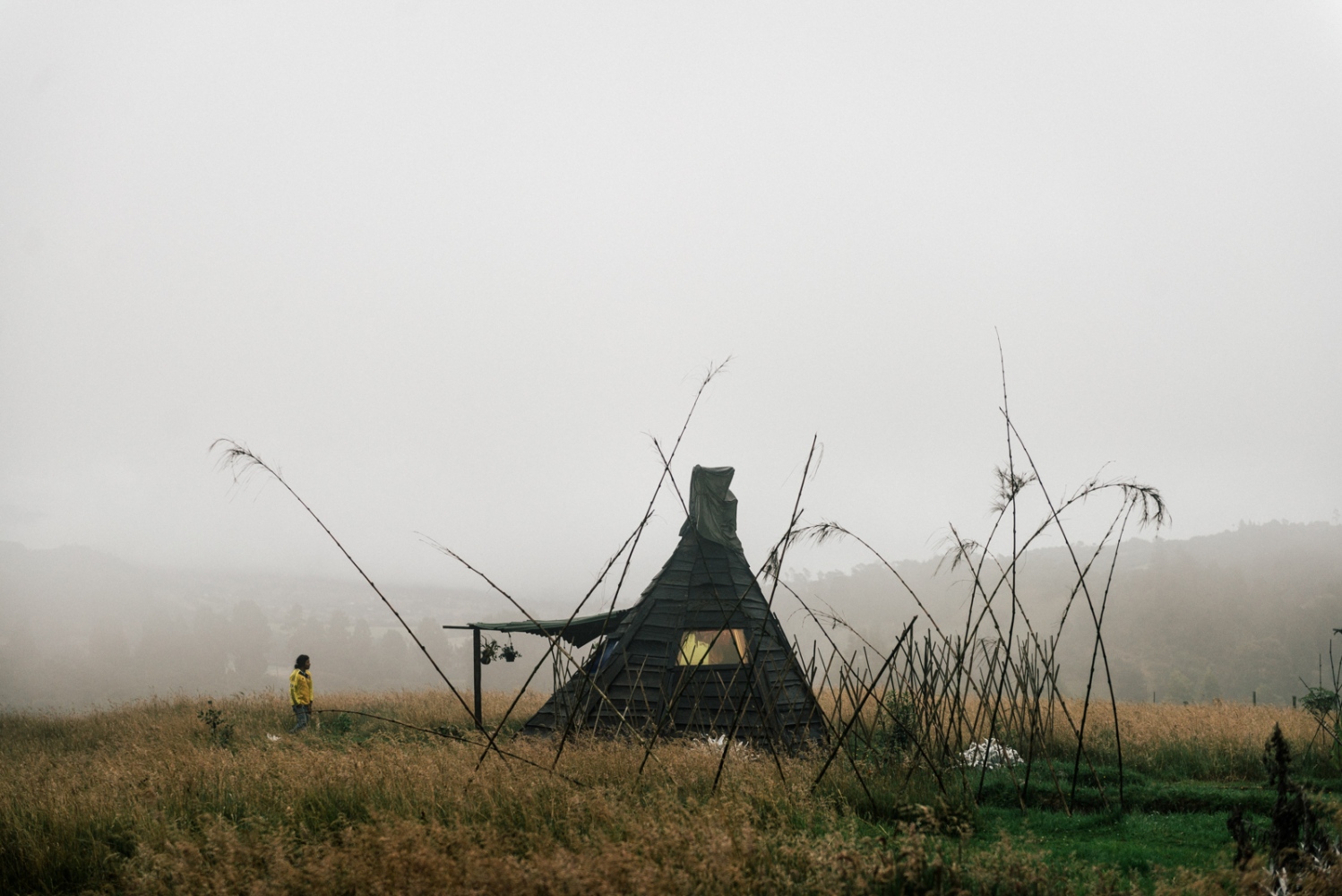
Samuel explores a small abode on a farm in the hills of La Calera, Colombia.
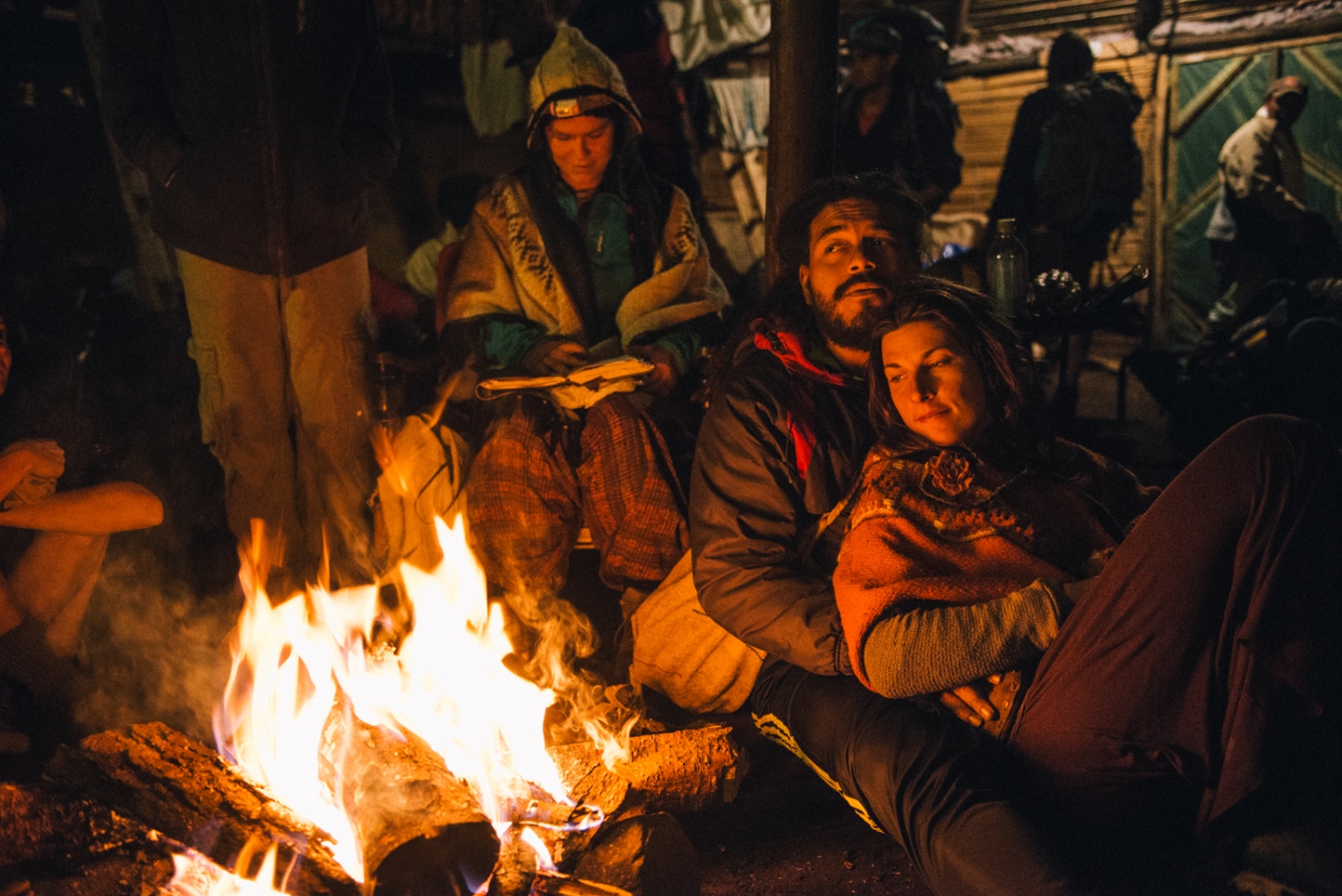
Medicine music composer Kirtan Reggae cuddles up with a foreign festival goer next to the fire during a spirituality and alternative living festival in La Calera, Colombia.
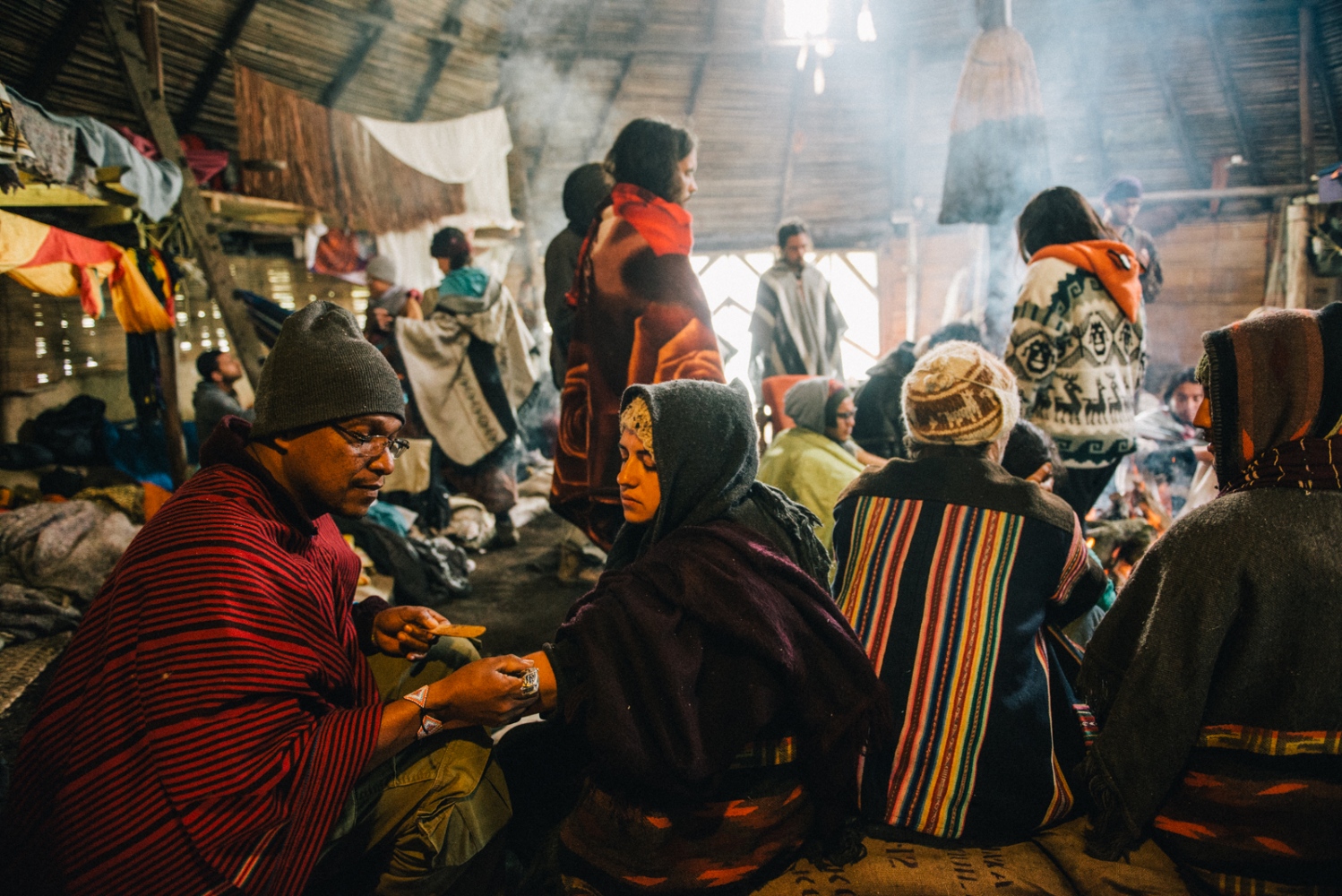
Medicine man Argemiro applies 'kambo,' the frog venom vaccine of the Amazons to a patient in the 'maloca' during a Kambo ceremony in La Calera, Colombia.
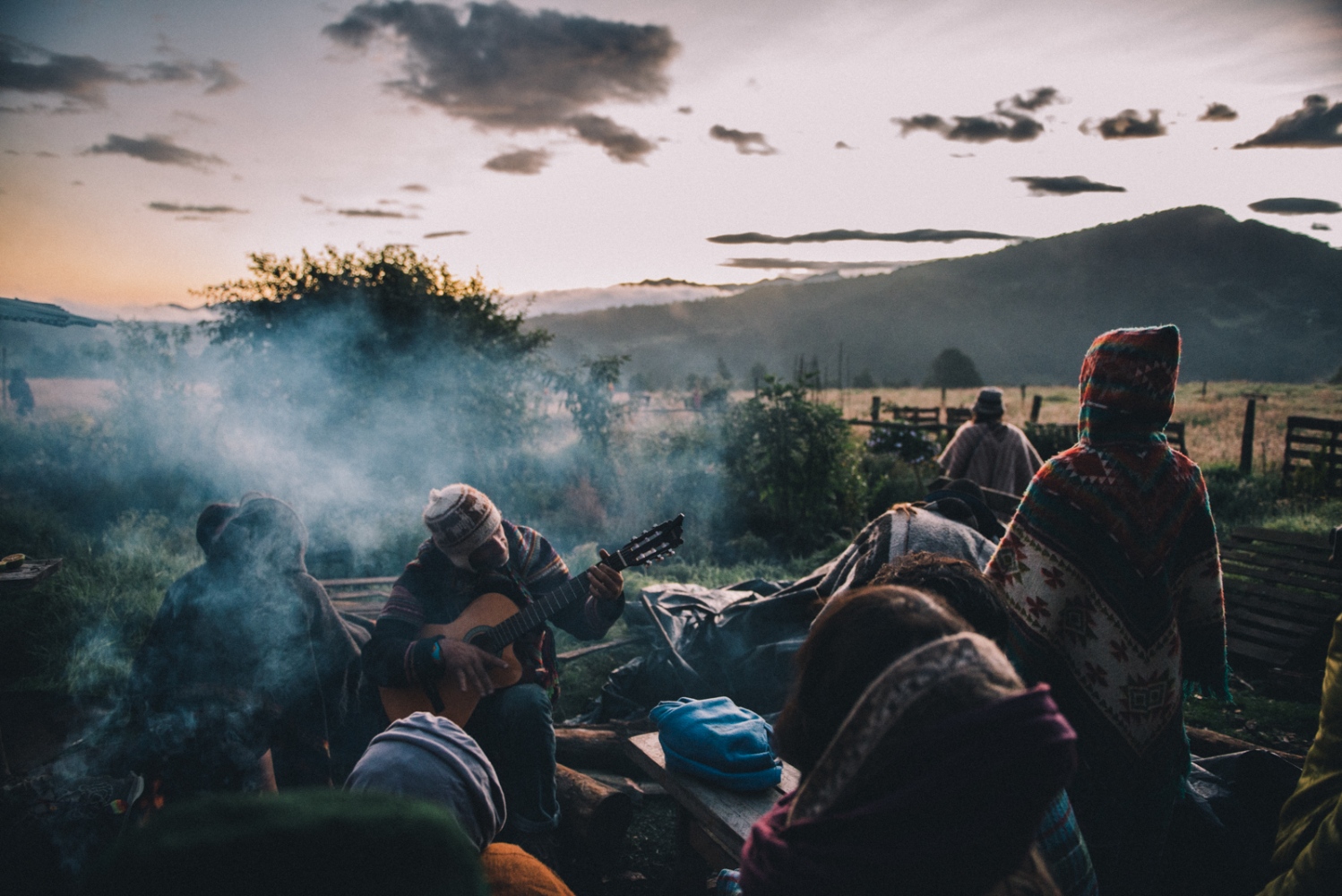
Travelers and festival goers emerge from the maloca to greet the rising sun after a nightlong ceremony of Cacao and Ambira in La Calera, Colombia.
